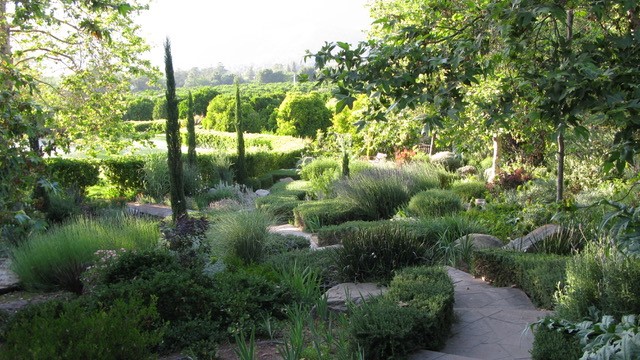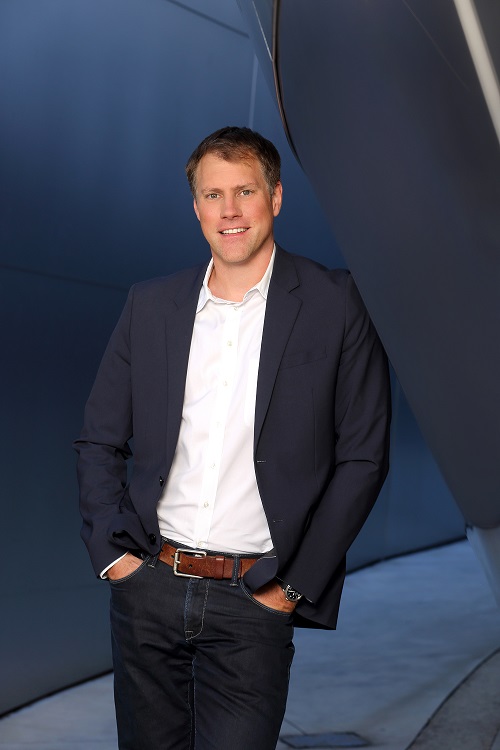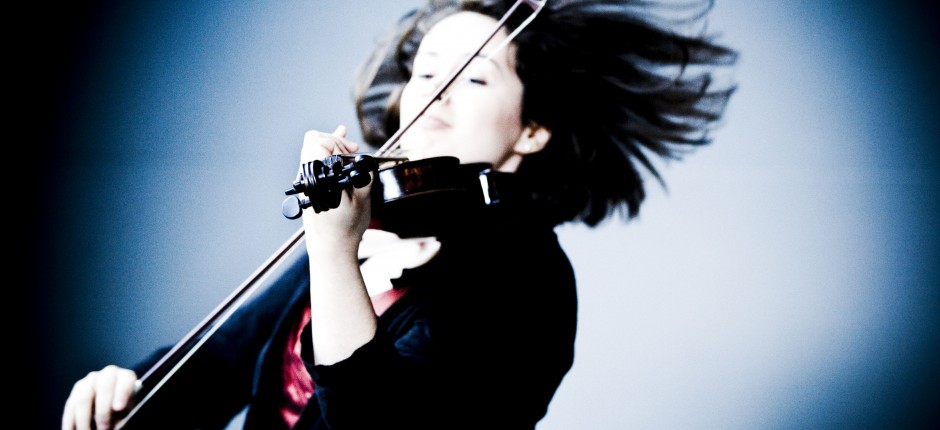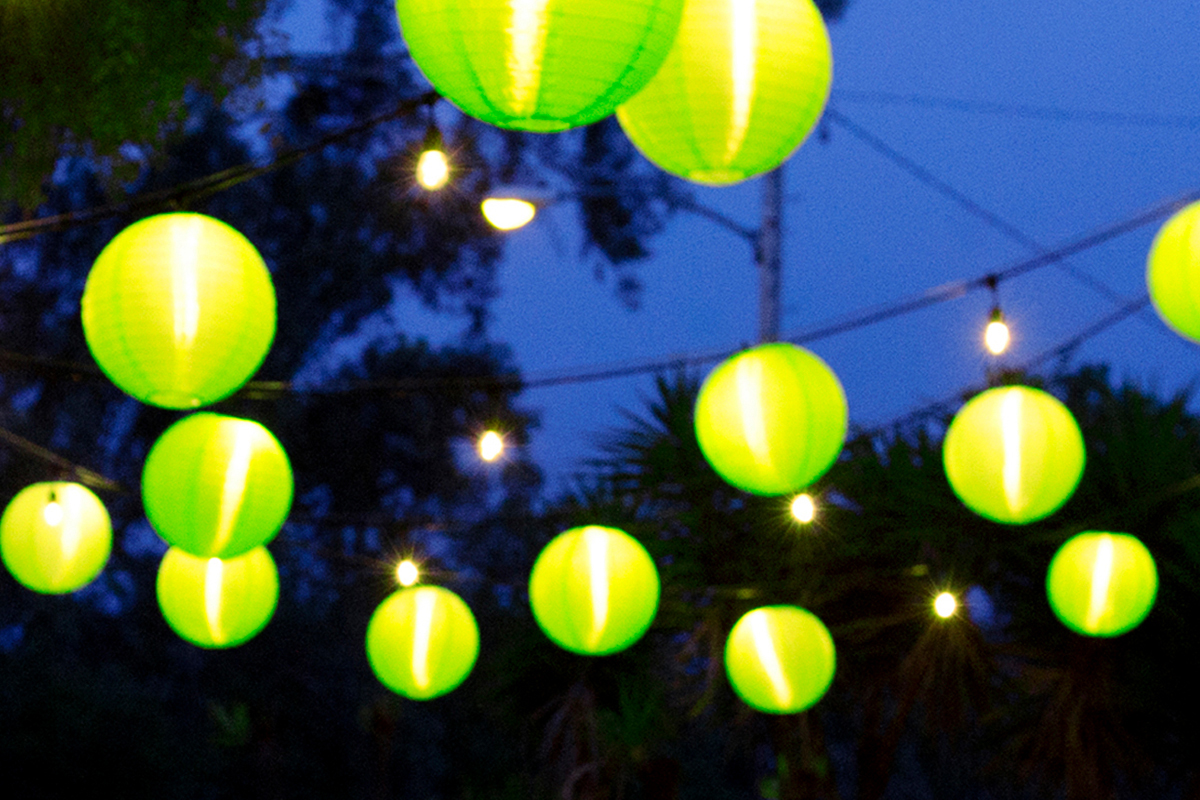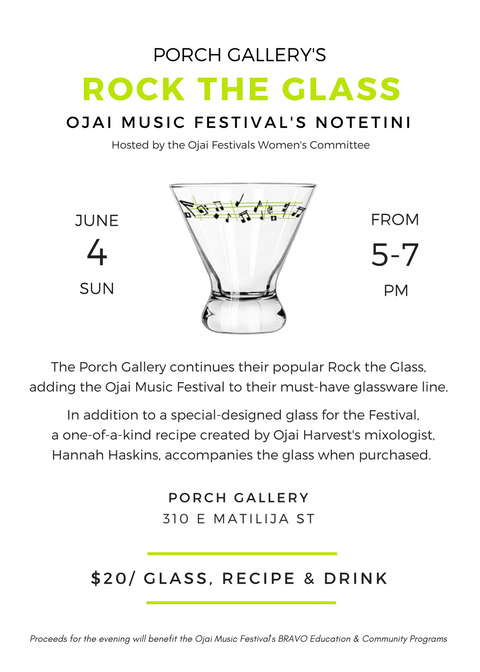2018 Ojai Garden & Music Package
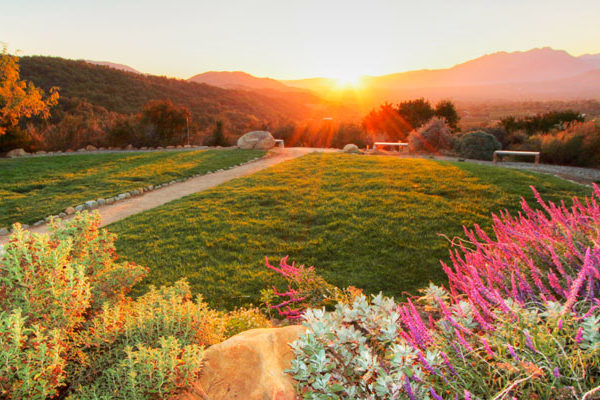
EXPERIENCE BEAUTIFUL OJAI
A private two-day package for garden lovers
FRIDAY, JUNE 8 to SUNDAY, JUNE 10
- Stay at the Ojai Valley Inn and Spa in a well-appointed fireplace room
- Attend exceptional concerts of the Ojai Music Festival in the outdoor Libbey Bowl
- Visits to some of Ojai’s finest private gardens including a personal tour of Peter Strauss’ Moroccan Garden, a Pamela Burton designed landscape in Upper Ojai, Paul Hendershot’s own house and garden, and the Turtle Conservancy and Gardens
- Lunch under the oak trees on an historic estate, al fresco dinner in Libbey Park, and Sunday brunch in upper Ojai
One weekend
One price*
One amazing experience
Package includes:
two nights at hotel, shuttle during your stay in Ojai, tickets for four concerts, VIP access to Festival lounge and additional surprises
There is limited space for this exclusive package.
Please respond as soon as possible to ensure your place.
Contact Gina Gutierrez at 805 646 2181 or email [email protected]
*$1,630 per person (double occupancy) | For single occupancy, add $630
A Perfect Ojai Music Adventure: June 7-10, 2018
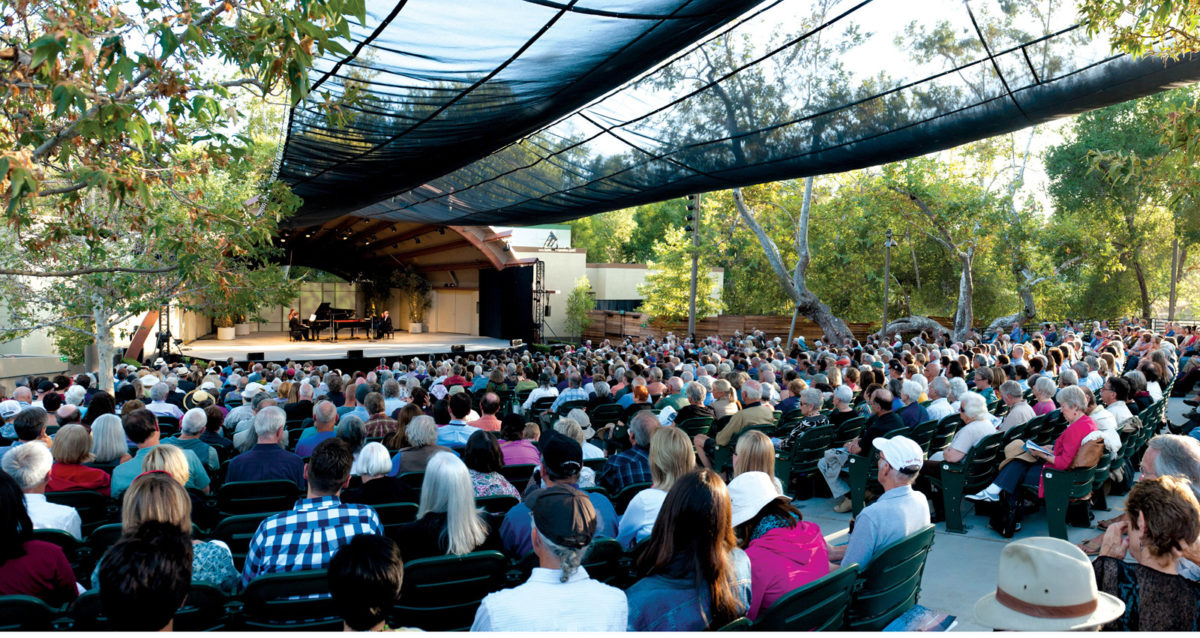
“The Ojai Music Festival has been raising a finely calibrated ruckus each spring since 1947.”– Alex Ross, The New Yorker
The Ojai Music Festival’s unparalleled legacy brings fearless musical innovators to share fresh and compelling sounds, ideas, and collaborations with an inquisitive audience open to new adventures. Unlike other festivals, Ojai creates a curated narrative thread over four concentrated days of surprise and wonder, giving audiences and artists an immersive artistic, intellectual, and stimulating experience.
Praised for her “savage energy” (The Washington Post) and “mesmerizing artistry” (The Strad), the Moldovan-Austrian violinist Patricia Kopatchinskaja journeys to Ojai as the 2018 Music Director and shares her boundless passion for the old, the new, and the challenging. A path-breaking collaborator with timely insights on the state of our world, Patricia will provoke important conversations that venture beyond the music.
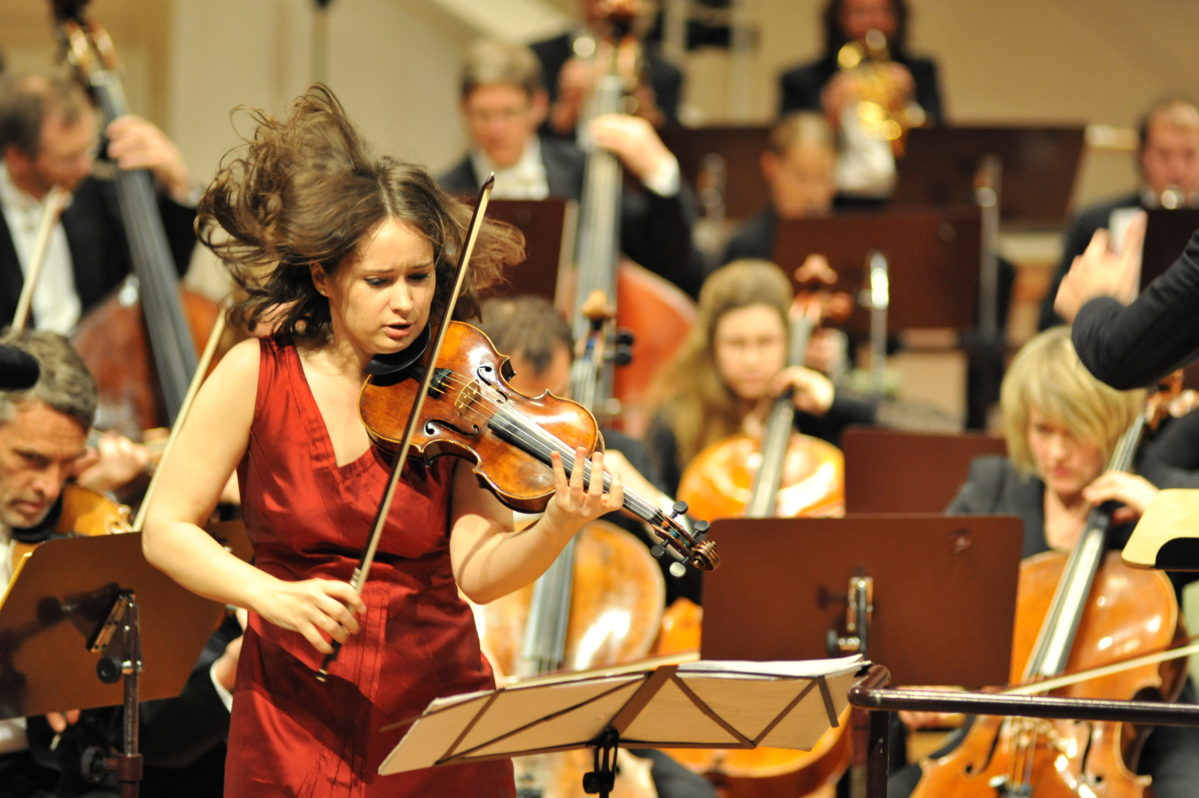
2018 Highlights:
- Two semi-staged concerts conceived and directed by Kopatchinskaja
- The world premiere of a commissioned work by Michael Hersch
- Stravinsky’s L’Histoire du Soldat on the occasion of its centennial
- Free music events including Luciano Berio’s Sequenzas for solo instruments and two concerts for children devised and performed by Kopatchinskaja
- Collaborations with soprano Ah Young Hong in Kurtag’s Kafka Fragments, Ravel’s Sonata for Violin and Cello with JACK Quartet cellist Jay Campbell, and with her parents in an exploration of Moldavian folk music.
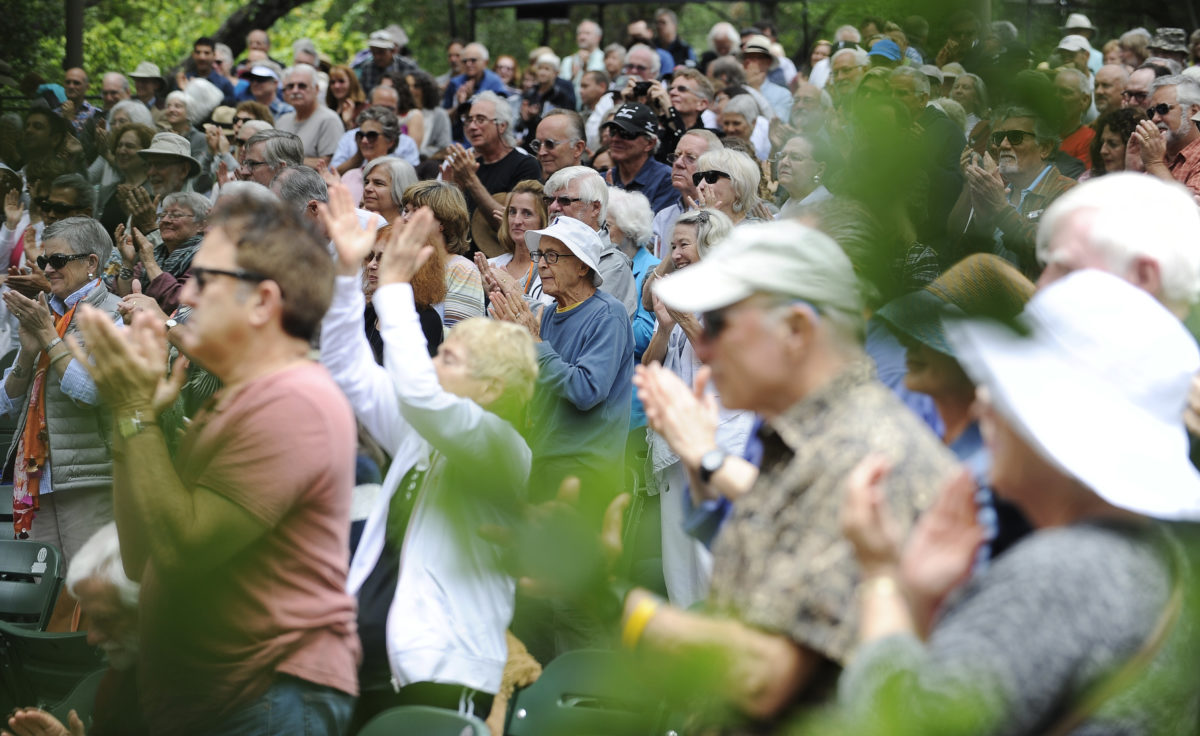 The Benefits of Ordering Series Passes:
The Benefits of Ordering Series Passes:
In addition to getting the best value and the best seats for every concert, you connect with the musical journey, with the artists, and with other music enthusiasts, all in the intimate setting of Ojai for a super-charged immersive experience. - A planned musical journey across four days
- Priority seating for the best seats in Libbey Bowl
- Special seating area at the Children’s Concert
- Flexible seat exchange policy
- Best savings over single ticket prices
- Access to private events throughout the year
Enjoy a series immersion pass : 4-day, 3-day, or weekend passes available. Use promo code Ojailove2018 and receive an additional discount, now until March 11, 2018. Call our box office at 805 646 2053 or purchase online here>
Matthias Pintscher, 2020 Music Director
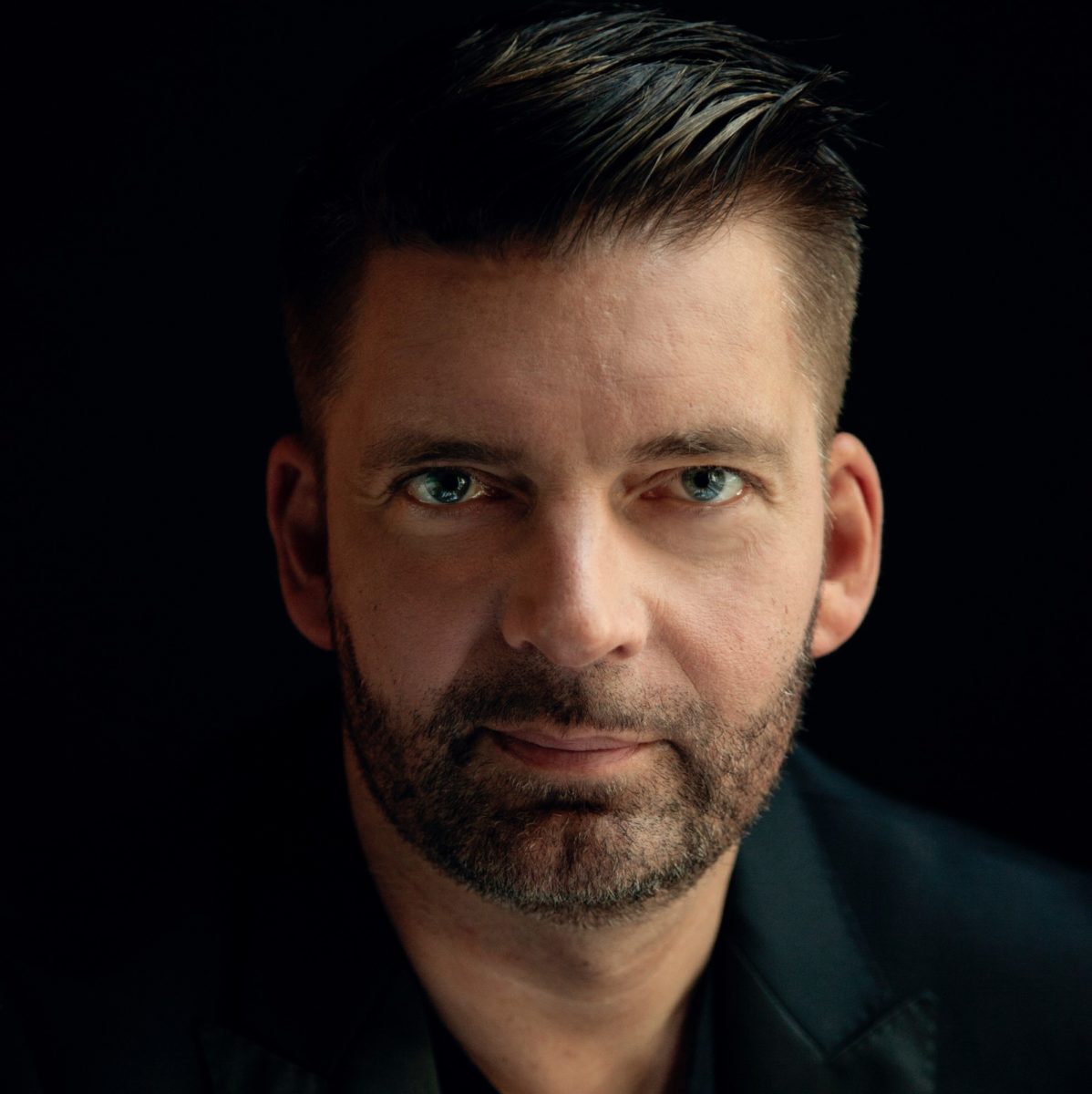
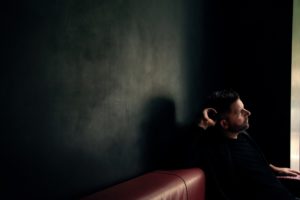 Matthias Pintscher is Music Director of the Ensemble Intercontemporain and Principal Conductor of the Lucerne Festival Academy Orchestra. He is currently in his seventh year as Artist in Association with the BBC Scottish Symphony and was the inaugural Artist in Residence and featured artist at the new Elbphilharmonie concert hall in Hamburg.
Matthias Pintscher is Music Director of the Ensemble Intercontemporain and Principal Conductor of the Lucerne Festival Academy Orchestra. He is currently in his seventh year as Artist in Association with the BBC Scottish Symphony and was the inaugural Artist in Residence and featured artist at the new Elbphilharmonie concert hall in Hamburg.
Matthias began his musical training in conducting with Hungarian Composer and Conductor Peter Eötvös during his early twenties, during which time composing took a more prominent role in his life. Soon after, he divided his time equally between conducting and composing studying with teacher and mentor Pierre Boulez, soon rising to critical acclaim and more recently is conducting as a major role.
Conducting highlights of the 16/17 season included projects with the Berliner Philharmoniker, Los Angeles Philharmonic, Cleveland Orchestra, Dallas Symphony, Cincinnati Symphony, Symphonieorchester des Bayerischen Rundfunks, Mariinsky Orchestra, Deutsches Sinfonieorchester Berlin, Radio Symphonie Orchester Wien and Deutsche Kammerphilharmonie Bremen as well as an extensive tour of Asia with the Ensemble Intercontemporain in celebration of their 40th anniversary. In addition, Matthias has also appeared as guest conductor with the NDR Hamburg, Danish Radio Symphony, Sydney, Melbourne Symphony, New York Philharmonic, Chicago Symphony, DSO Berlin, Mahler Chamber and Helsinki Philharmonic Orchestras.
Matthias is a prolific composer whose works are performed by leading orchestras and artists worldwide. The debut of his Cello Concerto Un Despertar was premiered last season by Alisa Weilerstein and the Boston Symphony Orchestra, and in April 2017 the World Premiere of Shirim for Baritone and Orchestra with Danish singer Bo Skovhus and the NDR Elbphilharmonie Orchester in Hamburg. Matthias is also professor at The Julliard School since 2014 and is published by Bärenreiter-Verlag.
During the 17/18 season, Matthias will return to the Los Angeles Philharmonic and BBC Scottish Symphony Orchestras, as well as projects with the Utah Symphony Orchestra, Gulbenkian Orchestra, Finnish Radio Symphony Orchestra, Mahler Chamber Orchestra (Beethoven 9), the Saint Paul Chamber Orchestra and Orchestra de la Suisse Romande as well as debuts with the Royal Concertgebouw Orchestra and the London Symphony Orchestra.
For further information on this artist, please contact:
EDWARD PASCALL, Senior Artist Manager
[email protected] | +44 (0)20 7400 1725
OLLIE HAINES, Assistant Artist Manager
[email protected] | +44 (0)20 7400 1749
Askonas Holt Limited
Lincoln House, 300 High Holborn, London WC1V 7JH, United Kingdom
T +44 (0)20 7400 1700 askonasholt.co.uk [email protected]
Patricia Discusses the 2018 Festival
2018 Music Director Patricia Kopatchinskaja details the upcoming Festival – she put careful thought and feeling into her planning. In this video, you can see her passion and contagious enthusiasm.
You can purchase your series passes by following this link, or by calling 805-646-2053.
2018 Video
Welcome to our library of videos relating to 2018 Festival artists! Learn more about what to expect in June.
2018 Festival Line-Up is Announced
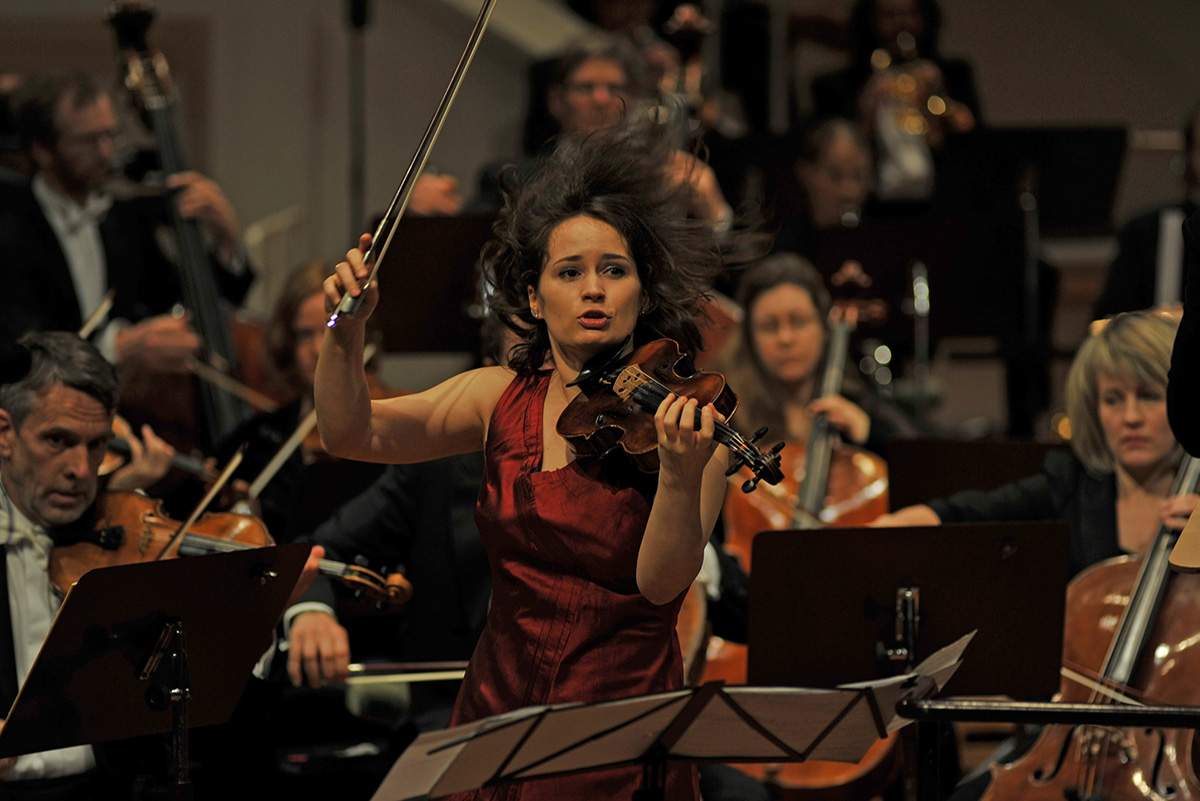
“Ojai is special. There is no fight with new music, no fear — just curiosity and hunger for fresh music of today. The Ojai audiences are completely open minded, and it’s a wonderful possibility to do music that I truly enjoy and find powerfully relevant in our present world. Ojai is magic,” Patricia Kopatchinskaja, 2018 Music Director.
“When I first met Patricia Kopatchinskaja, I knew she was a natural to be Music Director of the Festival. She is, quite simply, a force of nature. Her unstoppable energy, blazing virtuosity, and relentless curiosity are irresistible. The 2018 Festival will showcase her wildly diverse artistic talents as a violinist, a collaborator, a director, an advocate, and as a creative force. Patricia sees music in the context of today’s social and political issues so the 2018 Festival is one that will surely offer confrontation, questioning, and healing. The 2018 Festival aims to capture Patricia’s infectious energy and virtuosity,” Thomas W. Morris, Artistic Director.
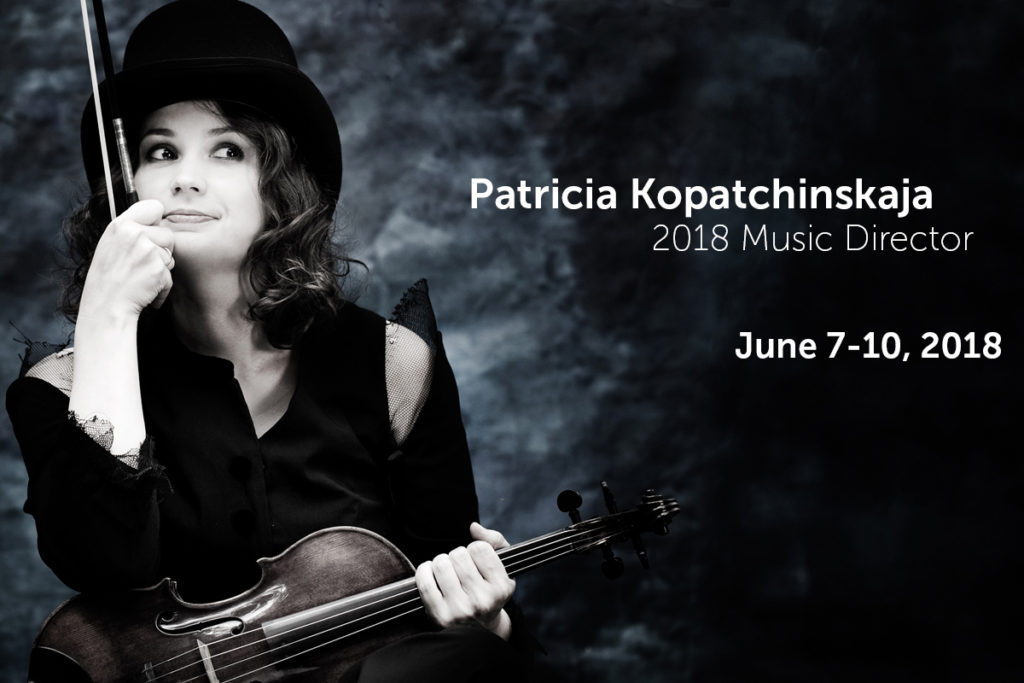
The 72nd Ojai Music Festival, June 7-10, 2018, presents Music Director Patricia Kopatchinskaja’s unbounded musical creativity and perspective in the context of today’s social and political climate.
The 2018 Ojai Music Festival welcomes the Mahler Chamber Orchestra (MCO) in its first extended United States residency. Founded in 1997, the Berlin-based MCO defines itself as a free and international ensemble, dedicated to creating and sharing exceptional experiences in classical music. With members spanning 20 different countries, the MCO works as a nomadic collective of passionate musicians uniting for specific projects in Europe and across the world. The MCO forms the basis of the Lucerne Festival Orchestra and maintains long and fruitful artistic relationships with major artists, including Ms. Kopatchinskaja and Mitsuko Uchida, Ojai’s 2021 Music Director. In Ojai, MCO will display its versatility and virtuosity as an orchestral ensemble, in smaller chamber iterations, and also in superb solo performances from individual members.
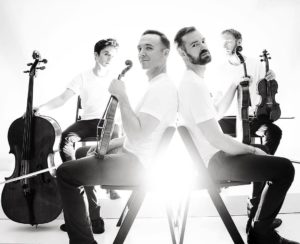 The JACK Quartet also makes its Ojai debut at the 2018 Festival. Deemed “superheroes of the new music world” (Boston Globe), JACK is dedicated to the performance, commissioning, and spread of new string quartet music. Comprising violinists Christopher Otto and Austin Wulliman, violist John Pickford Richards, and cellist Jay Campbell, the group collaborates with composers of our day, including John Luther Adams, Chaya Czernowin, Simon Steen-Andersen, Caroline Shaw, Helmut Lachenmann, Steve Reich, Matthias Pintscher, and John Zorn. Upcoming and recent premieres include works by Derek Bermel, Cenk Ergün, Roger Reynolds, Toby Twining, and Georg Friedrich Haas. At the 2018 Festival, JACK will perform works by Georg Frederick Haas, Horatio Radulescu, Morton Feldman, George Crumb and Jorge Sanchez-Chiong.
The JACK Quartet also makes its Ojai debut at the 2018 Festival. Deemed “superheroes of the new music world” (Boston Globe), JACK is dedicated to the performance, commissioning, and spread of new string quartet music. Comprising violinists Christopher Otto and Austin Wulliman, violist John Pickford Richards, and cellist Jay Campbell, the group collaborates with composers of our day, including John Luther Adams, Chaya Czernowin, Simon Steen-Andersen, Caroline Shaw, Helmut Lachenmann, Steve Reich, Matthias Pintscher, and John Zorn. Upcoming and recent premieres include works by Derek Bermel, Cenk Ergün, Roger Reynolds, Toby Twining, and Georg Friedrich Haas. At the 2018 Festival, JACK will perform works by Georg Frederick Haas, Horatio Radulescu, Morton Feldman, George Crumb and Jorge Sanchez-Chiong.
Major projects will include two semi-staged concerts conceived and directed by Ms. Kopatchinskaja. The first, which opens the Festival on Thursday night, is Bye Bye Beethoven. Kopatchinskaja describes the concert as a commentary on “the irrelevance of the classic concert routine for our present life.” This program features a mash-up of music by Charles Ives, John Cage, Joseph Haydn, György Kurtág, Johann Sebastian Bach, and the Beethoven Violin Concerto. This marks the US premiere of Bye Bye Beethoven, which was premiered at the Hamburg International Music Festival and subsequently staged in Berlin. This production marked the fourth collaboration between Ms. Kopatchinskaja and the Mahler Chamber Orchestra. Bye Bye Beethoven involves musicians in both conventional and unconventional roles, encounters with different musical genres – including a collaboration with sound designer Jorge Sanchez-Chiong – and discourse among sound, space and imagery.
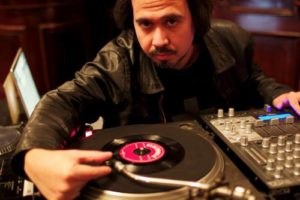 The second semi-staged concert conceived and directed by Ms. Kopatchinskaja is her own provocative commentary on the consequences of global warming. Titled Dies Irae, the program is an aesthetic reflection of a time rife with global warming, wars over resources, and refugee crises. Musical selections include Heinrich Ignaz Franz Biber, George Crumb, Michael Hersch, Byzantine chant, Giacinto Scelsi, and Galina Ustvolskaya’s remarkable Dies Irae for eight double basses, piano, and wooden box. The evening performance on Saturday, June 9, 2018 marks its American premiere.
The second semi-staged concert conceived and directed by Ms. Kopatchinskaja is her own provocative commentary on the consequences of global warming. Titled Dies Irae, the program is an aesthetic reflection of a time rife with global warming, wars over resources, and refugee crises. Musical selections include Heinrich Ignaz Franz Biber, George Crumb, Michael Hersch, Byzantine chant, Giacinto Scelsi, and Galina Ustvolskaya’s remarkable Dies Irae for eight double basses, piano, and wooden box. The evening performance on Saturday, June 9, 2018 marks its American premiere.
A new piece by American composer Michael Hersch – described by him as a dramatic cantata for two sopranos and eight instrumentalists – will receive its world premiere at the 2018 Ojai Music Festival, with subsequent performances at Cal Performances’ Ojai at Berkeley and at Great Britain’s venerable Aldeburgh Festival. The Friday, June 8, 2018 premiere follows works by Carl Philip Emmanuel Bach, Jorge Sanchez-Chiong, and piano music by Bull, Byrd, Purcell as well as improvisations. Mr. Hersch, who wrote a violin concerto for Ms. Kopatchinskaja two years ago, is considered one of the most gifted composers of his generation and is a formidable pianist. He currently serves on the composition faculty at the Peabody Institute of the Johns Hopkins University.
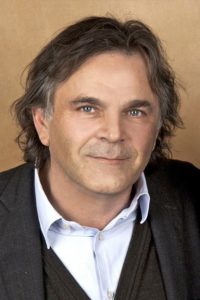 Featured on Friday afternoon (June 8) will be the music of Russian composer Galina Ustvolskaya, described by Alex Ross as “one of the century’s grand originals.” Kopatchinskaja has long been a passionate advocate of Ustvolskaya’s music and will perform with pianist Markus Hinterhäuser her Duet and Sonata. Hinterhäuser, who is also the Intendant of the Salzburg Festival, will perform all six of her piano sonatas. Ustvolskaya’s powerful Dies irae will be featured in the Saturday evening concert of the same title.
Featured on Friday afternoon (June 8) will be the music of Russian composer Galina Ustvolskaya, described by Alex Ross as “one of the century’s grand originals.” Kopatchinskaja has long been a passionate advocate of Ustvolskaya’s music and will perform with pianist Markus Hinterhäuser her Duet and Sonata. Hinterhäuser, who is also the Intendant of the Salzburg Festival, will perform all six of her piano sonatas. Ustvolskaya’s powerful Dies irae will be featured in the Saturday evening concert of the same title.
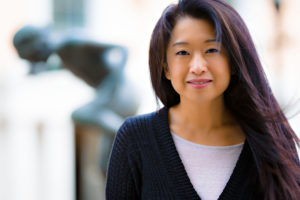 Additional programming highlights include Kurtag’s Kafka Fragments; Stravinsky’s L’Histoire du Soldat on the occasion of its centennial; major chamber and piano music by Galina Ustvolskaya; as well as Roumanian and Moldavian folk music performed by Ms. Kopatchinskaja and her parents, Viktor and Emilia Kopatchinski on cimbalom and violin. The Festival closes with the Ligeti Violin Concerto performed by Patricia Kopatchinskaja.
Additional programming highlights include Kurtag’s Kafka Fragments; Stravinsky’s L’Histoire du Soldat on the occasion of its centennial; major chamber and piano music by Galina Ustvolskaya; as well as Roumanian and Moldavian folk music performed by Ms. Kopatchinskaja and her parents, Viktor and Emilia Kopatchinski on cimbalom and violin. The Festival closes with the Ligeti Violin Concerto performed by Patricia Kopatchinskaja.
Free Community Concerts
The 2018 Festival continues to build on its commitment to reach broader audiences with several opportunities for all to experience Ojai offerings. On Thursday June 7, following the three-part Ojai Talks dialogues, the Festival commences the first in a series of six free pop-up concerts in the Gazebo of Libbey Park, featuring performances of most of Luciano Berio’s Sequenzas for solo instruments by members of the Mahler Chamber Orchestra. Patricia Kopatchinskaja and Jorge Sanchez-Chiong, electronics, will also perform Luigi Nono’s La lontanaza nostalgica utopia future in a free concert Thursday evening in Libbey Park, preceding the Festival’s first main Libbey Bowl concert of Ms. Kopatchinskaja’s semi-staged concert Bye Bye Beethoven. Additionally, Ms. Kopatchinskaja has programmed two free concerts just for children. Children of all ages will convene in the Ojai Art Center listen to works by Berio, Biber, Cage, Holliger, Arthur Honegger, and Ferdinand the Bull by Alan Ridout for solo violin and speaker. These concerts for children are presented in association with the Festival’s BRAVO education program for schools and community.
Ojai Talks
The 2018 Festival begins with Ojai Talks hosted by Ara Guzelimian, former Festival Artistic Director and current Dean and Provost of The Julliard School. On Thursday, June 7, a three-part series of discussions will begin with an exploration of Patricia Kopatchinskaja’s musical preferences and inspirations. The Ojai Music Festival’s march toward its 75th anniversary frames the second Ojai Talks, with reflections on its storied legacy, contextualization of its place on the world stage, and hints of what evolutions may impact the Festival in the future. The third part of the discussion series will speak to the reinvention of musical groups, with panelists from the JACK Quartet and from the Mahler Chamber Orchestra.
Additional on-site and on-line dialogue during the 2018 Festival includes Concert Insights, the preconcert talks at the LIbbey Bowl Tennis Courts with Festival artists hosted by resident musicologist Christoper Hailey. Preconcert interviews are broadcast through the Festival’s free live streaming program, hosted by content-expert individuals from across the nation.
Additional details for Ms. Kopatchinskaja’s 2018 Festival will be announced in the spring.
New Partnership with the Aldeburgh Festival
Following the 2018 Festival in Ojai with Music Director Patricia Kopatchinskaja and the following week’s Ojai at Berkeley presented in collaboration with Cal Performances, a new partnership with Aldeburgh will take place at the end of the Aldeburgh Festival (June 21 – 24) based at the acclaimed Maltings Concert Hall and in the town of Snape near Aldeburgh in England. The collaboration with Aldeburgh follows the formation of Ojai at Berkeley as a partnership of co-productions and co-commissions that affords the Ojai Music Festival, the Aldeburgh Festival, and Cal Performances the ability to present more complex and creative artistic projects than could be conceived by each partner separately. The Aldeburgh relationship launches in June 2018, for an initial four-year period.
Ojai at Berkeley
Marking the eighth year of artistic partnership, Ojai at Berkeley celebrates the dynamic nature of the Ojai Music Festival and of Cal Performances. As two distinct communities, Ojai and Berkeley are both known for intrepid artistic discovery, spirited intellect, and enduring engagement in the arts. Inaugurated in 2011, Ojai at Berkeley is a joint force that enables co-commissions and co-productions and allows artists to achieve more than could be imagined by each organization separately. Ojai at Berkeley will take place from June 15-17 in Berkeley, CA, following the Ojai Music Festival. For more information, visit CalPerformances.org.
2018 Festival series passes are available now and may be purchased online at OjaiFestival.org or by calling (805) 646-2053.
Congrats to Tyshawn Sorey: 2017 MacArthur Fellow Recipient
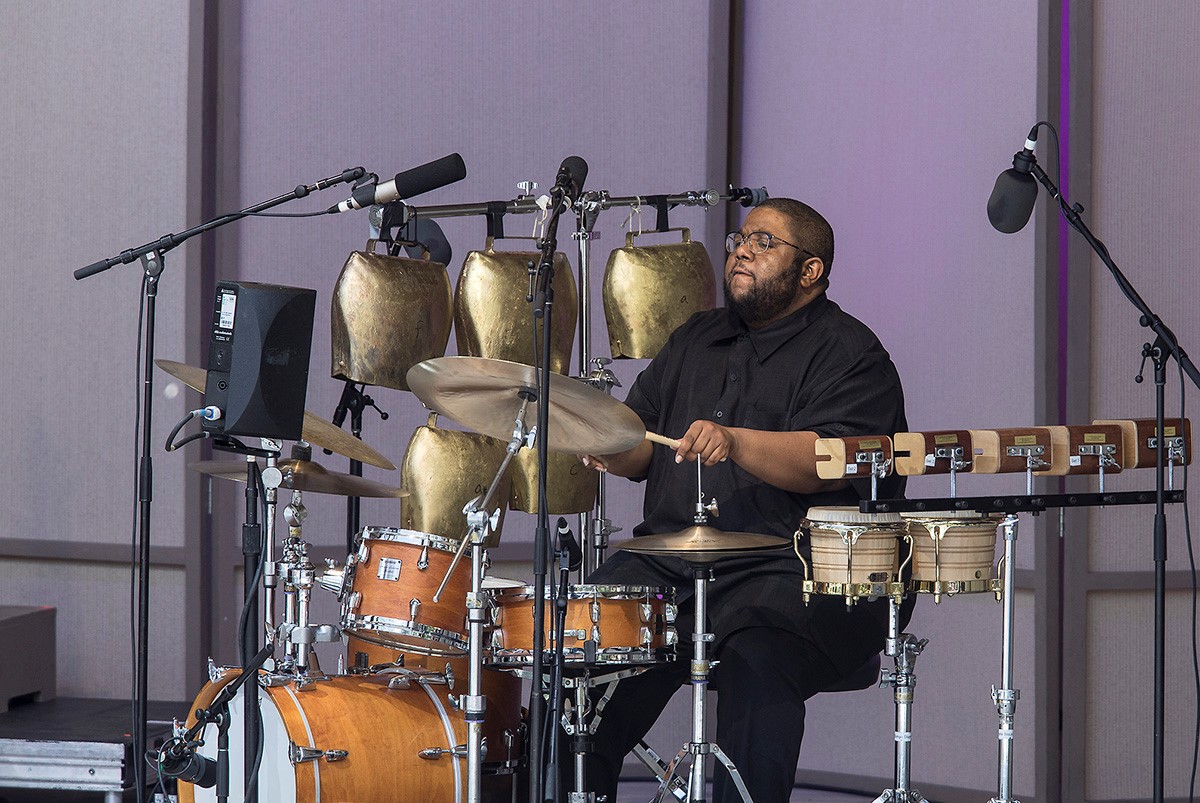
Congratulations to our friend and collaborator Tyshawn Sorey on his appointment as a MacArthur Fellow. Tyshawn’s astonishing creativity has been so evident in Ojai for the last two Festivals – 2016 with Peter Sellars and Julia Bullock, and in 2017 with Vijay Iyer (Sellars and Iyer are themselves MacArthur Fellows). Ojai is an incubator for artists and music, and we can all be proud to see these so honored and recognized with this exciting award. Wonderful and well-deserved news, Tyshawn.” – Thomas W. Morris
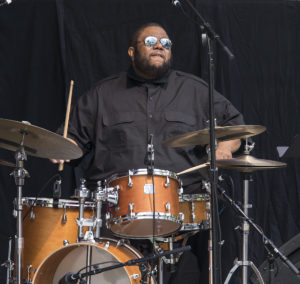
The MacArthur Foundation recently announced their Class of 2017 recipients popularly referred to as a “genius grant.” This esteemed list included two-time Festival alum Tyshawn Sorey. A release from The John D. and Catherine T. MacArthur Foundation cited Sorey for “assimilating and transforming ideas from a broad spectrum of musical idioms and defying distinctions between genres, composition, and improvisation in a singular expression of contemporary music.”
The Foundation website summarizes Tyshawn’s work:
A virtuosic percussionist and drum set player who is fluent in piano and trombone, Sorey is an ever-curious explorer of the nature of sound and rhythm, ensemble behavior, and the physicality of live performance. He erodes distinctions among musical genres as well as the line between composition and improvisation and incorporates sophisticated rhythmic and harmonic phrasing, highly prescribed improvisational sound worlds, and real-time experimentation with sound, among many other structural elements. At the same time, he possesses a refined sense of restraint and balance that allows him to maintain his own unique voice while bringing a vast array of musical settings to life. He explores various World and Eastern musical and philosophical concepts on his albums Koan (2009) and Alloy (2014), employing musical languages that range from slowly developing tonally and pantonally based music to free atonal pieces that contain irregular rhythms, lyrical phrasing, and distinctive pacing. Inner Spectrum of Variables (2015) features an extended composition in six movements that merges the harmonic and melodic vocabularies of Western classical, American, and Ethiopian creative expressions, free improvisation, and twentieth-century avant-garde musical traditions. In his song cycle Perle Noire: Meditations for Josephine (2016), Sorey reimagines the legendary Josephine Baker’s works; his original recreations of songs sung by Baker reflect both the context of her contributions to the civil rights movement and contemporary incidences of racial injustice. Sorey challenges expectations of jazz piano trio performance on Verisimilitude (2017), a set of five abstract, enigmatic, and austere pieces in which the delineation between spontaneous and formal composition is even more obscured.
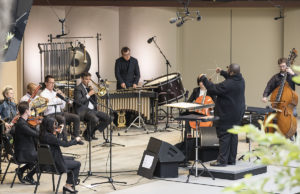 In addition to his own work as a composer, conductor, and ensemble leader, Sorey’s prowess as a percussionist and drum set player is well known, and he continues to be in high demand as a sideman for popular creative artists. With his genre-free approach to making music and continuous experimentation, Sorey is rapidly emerging as a singular talent in contemporary musical composition and performance.
In addition to his own work as a composer, conductor, and ensemble leader, Sorey’s prowess as a percussionist and drum set player is well known, and he continues to be in high demand as a sideman for popular creative artists. With his genre-free approach to making music and continuous experimentation, Sorey is rapidly emerging as a singular talent in contemporary musical composition and performance.
The Ojai Music Festival congratulates Tyshawn for joining the ranks of these creative and forward-thinking individuals. Read more here >
“It’s like a dream – to be able to play and hear my most beloved musical pieces of our time over the course of only a few days, and to share it with the audience members of the most vibrant and progressive festival on the American continent – Ojai. These pieces changed my life; I hope ¬ they will find a very special place also in your souls.” – Patricia Kopatchinskaja
“When I first met Patricia Kopatchinskaja, I knew she was a natural to be Music Director of the Ojai Music Festival. Her unstoppable energy, blazing virtuosity, and relentless curiosity are irresistible, as she demonstrated at the Festival’s Ears Open event in Ojai a year ago. The 2018 Festival will be a showcase of her creativity – as a violinist, as a collaborator, as a programmer, and as a commentator on our time. Patricia sees music in the context of today’s social and political issues so the 2018 Festival is one that will surely offer confrontation, questioning, and healing.” – Thomas W. Morris
The Ojai Music Festival is proud to present Patricia Kopatchinskaja as Music Director of the 2018 Festival (June 7-10) in her West Coast debut. Joining Patricia, will be the Mahler Chamber Orchestra in its first extended United States residency.
The Mahler Chamber Orchestra was founded in 1997 based on the shared vision of being a free and international ensemble, dedicated to creating and sharing exceptional experiences in classical music. With 45 members spanning 20 different countries at its core, the MCO works as a nomadic collective of passionate musicians uniting for specific tours in Europe and across the world. Based in Berlin, the Mahler Chamber Orchestra forms the basis of the Lucerne Festival Orchestra and has long and fruitful artistic relationships with major artists, including Patricia and Mitsuko Uchida, Ojai’s 2021 Music Director.
In Ojai, the Mahler Chamber Orchestra will be featured both as an orchestral ensemble, and also as a showcase for the superb solo and chamber music artistry of its members.
Major 2018 Festival projects include two staged concerts designed by Patricia. The first is Bye Bye Beethoven, which she describes as a commentary on “the irrelevance of the classic concert routine for our present life.” This staged program features a mash-up of music by Charles Ives, John Cage, Joseph Haydn, György Kurtág, Johann Sebastian Bach, and the Beethoven Violin Concerto. Her second semi-staged concert is her own provocative commentary on the inevitable consequences on the planet of global warming. Titled Dies Irae, the program includes music by Heinrich Ignaz Franz Biber, Michael Hersch, Byzantine chant, Giacinto Scelsi, and Galina Ustvolskaya’s remarkable Dies Irae for eight double basses, piano, and wooden coffin.
A new piece by American composer Michael Hersch – described by him as a dramatic cantata for two sopranos and eight instrumentalists – will receive its world premiere at the 2018 Festival, with subsequent performances at Cal Performances’ Ojai at Berkeley and at Great Britain’s venerable Aldeburgh Festival. Hersch, who wrote a violin concerto for Patricia two years ago, is considered one of the most gifted composers of his generation and is a formidable pianist. He currently serves on the composition faculty at the Peabody Institute of the Johns Hopkins University. This new work is a co-commission by the Ojai Music Festival, Cal Performances Berkeley, the Aldeburgh Festival, and PNReview, the prominent British poetry magazine at which Hersch is artist-in-residence.
Additional programming highlights include Kurtag’s Kafka Fragments; Stravinsky’s L’Histoire du Soldat on the occasion of its centennial; major chamber and piano music by Galina Ustvolskaya; as well as Roumanian and Moldavian folk music performed by Patricia and her parents, Viktor and Emilia Kopatchinski on cimbalom and violin. The Festival closes with the Ligeti Violin Concerto performed by Patricia.
Purchase 2018 Series Passes here
Additional details will be announced in the fall.
Patricia Kopatchinskaja, 2018 Music Director
Violinist Patricia Kopatchinskaja’s versatility shows itself in her diverse repertoire, ranging from Baroque and Classical often played on gut strings, to new commissions and re-interpretations of modern masterworks. Ms. Kopatchinskaja first visited Ojai in April 2016 as a guest on the Festival’s off-season “Open Ears” speaker series.
A celebrated collaborator, guest artist, and chamber musician, Ms. Kopatchinskaja’s current season highlights include the opening concerts of the new SWR Symphonieorchester with whom she performed Peter Eötvös’ DoReMi Violin Concerto (with the composer himself conducting); an appearance with NDR Elbphilharmonie Orchestra as part of the inaugural performances of the new Elbphilharmonie concert hall in Hamburg; debuts with Rotterdam Philharmonic Orchestra and with Gothenburg Symphonys. Continuing her regular collaboration with the London Philharmonic Orchestra, she appears with them in London and New York under Vladimir Jurowski. György Ligeti’s Violin Concerto is a particular focus of Ms. Kopatchinskaja’s current season; she will perform the work widely including with the Berliner Philharmoniker.
Ms. Kopatchinskaja serves as Artist in Residence at four major European venues and festivals: at the Berlin Konzerthaus; at the Lucerne Festival (where she will be artiste étoile); at the Wigmore Hall in London; and at the Kissinger Sommer Festival, and is an Artistic Partner with The Saint Paul Chamber Orchestra, performing regularly with the ensemble both in Saint Paul and internationally.
A prolific recording artist, the last few seasons have seen a number of major releases by
Ms. Kopatchinskaja. Her release for Naïve Classique featuring concerti by Bartók, Ligeti and Peter Eötvös won Gramophone’s Recording of the Year Award in 2013, an ECHO Klassik Award and a 2014 Grammy nomination. Her recently released “Take Two” on Alpha has garnered critical acclaim worldwide.
Grant Manager
Ojai Music Festival Grants Manager
Internationally regarded as one of the most influential annual classical music events, the Ojai Music Festival has long served as a creative musical laboratory for artists, composers and audiences alike to explore new and unfamiliar repertoire. The Festival uniquely combines the intimate setting of Ojai with artists performing innovative programs over an extended weekend to create an immersive experience. The Festival is committed to fostering a positive and dynamic culture among the performers, artistic staff, administrative staff, audience, volunteers, and the Ojai community. In addition, the Festival’s BRAVO education & community program actively teaches area youth about music and how it relates to other core curriculum subjects, as well as enriches the lives of the local elderly community. The Festival successfully led a community effort to raise $4 million to rebuild Libbey Bowl, which held its grand opening at the June 2011 Festival.
The Festival’s Grants Manager reports to the Director of Development and will work directly with the President and Artistic Director as needed to write, identify and solicit funding to meet the Festival’s $250,000 foundation budget (approximately 15-20 grants annually).
Overall Scope of Responsibilities:
- Write and develop grant proposals for foundations and other grant-making organizations, effectively communicating the Festival’s mission, programs, and goals to potential funders
- Identify new potential sources of funding from foundations, state and federal agencies, and corporate entities
- Manage and maintain the Festival grants calendar to ensure timely submissions of proposals, letters of inquiry, and all progress and final reports
- Assist Director of Development to build and maintain relationships with foundation contacts and program officers
- Ensure prompt acknowledgement of gifts in coordination with the Director of Development
- Stay up-to-date on the Festival’s program developments and outcomes, present and future artistic plans, and organizational needs
- Keep long-term organizational goals in mind to work to further develop and expand the Festival’s grant program
- Be available during the annual music festival and assist as necessary (2nd Thursday-Sunday in June)
Skills, Knowledge, and Abilities:
- A BA or equivalent degree (Music, English or Business degree preferred)
- Proven interest in the arts with music preferred
- 3+ years of proven recent grant writing experience, background in arts/music, (contemporary music a plus)
- Ability to write grants for both small and large regional, national, and international foundations and entities
- Strong general knowledge of Southern California Foundations a great benefit
- Proven ability to prioritize and manage multiple time-sensitive deadlines
- Reputation among funders as being a well liked yet persuasive and successful advocate
- Able to work independently with minimal supervision and able resourcefully utilize necessary staff/resources to source information and find effective solutions
- Creativity in finding new granting opportunities for the Festival’s unique location and program objectives
- Excellent organizational skills and attention to detail
- Exceptional communication and writing skills
Supervisor: Director of Development
Part-Time position: Approximately 8-10 hours/week with generous time off. Attendance at four-day festival essential. Ability to make visits to Ojai office a minimum of two times per month, remote working options are available for remaining days. Compensation commensurate with experience.
To Apply: Please submit your resume and a copy of a grant proposal written in the past 18 months to Anna Wagner, [email protected].
Mahler Chamber Orchestra
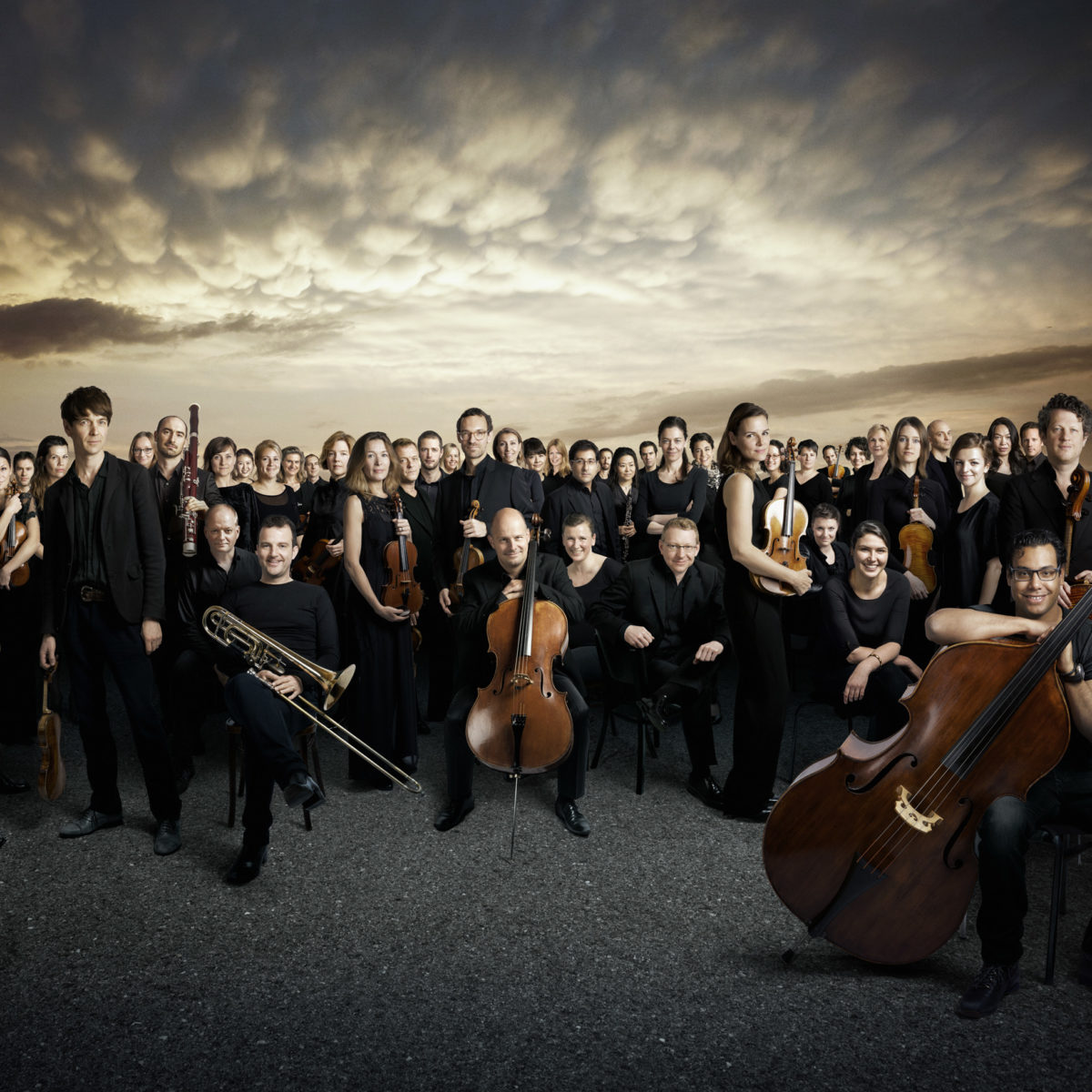
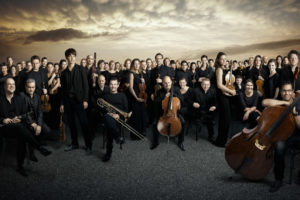
The Mahler Chamber Orchestra (MCO) was founded in 1997 based on the shared vision of being a free
and international ensemble, dedicated to creating and sharing exceptional experiences in classical
music. With 45 members spanning 20 different countries at its core, the MCO works as a nomadic
collective of passionate musicians uniting for specific tours in Europe and across the world. The
orchestra is constantly on the move: it has, to date, performed in 36 countries across five
continents. It is governed collectively by its management team and orchestra board; decisions are
made democratically with the participation of all musicians.
The MCO’s sound is characterized by the chamber music style of ensemble playing among its alert and
independent musical personalities. Its core repertoire, ranging from the Viennese classical and
early Romantic periods to contemporary works and world premieres, reflects the MCO’s agility in
crossing musical boundaries.
The orchestra received its most significant artistic impulses from its founding mentor, Claudio
Abbado, and from Conductor Laureate Daniel Harding. Pianist Mitsuko Uchida, violinist Isabelle
Faust and conductor Teodor Currentzis are current Artistic Partners who inspire and shape the
orchestra during long-term collaborations. In 2016, conductor Daniele Gatti was appointed Artistic
Advisor of the MCO. Concertmaster Matthew Truscott leads and directs the orchestra regularly in its
performances of chamber orchestra repertoire.
MCO musicians all share a strong desire to continually deepen their engagement with audiences. This
has inspired a growing number of offstage musical encounters and projects that bring music,
learning and creativity to communities across the globe. Feel the Music, the MCO’s flagship
education and outreach project, has opened the world of music to deaf and hard of hearing children
through interactive workshops in schools and concert halls since 2012. MCO musicians are equally
committed to sharing their passion and expertise with the next generation of musicians: since 2009,
they have, through the MCO Academy, worked with young musicians to provide them with a high quality
orchestral experience and a unique platform for networking and international exchange.
In recent years, the MCO’s major projects have included the award-winning Beethoven Journey with
pianist Leif Ove Andsnes, who led the complete Beethoven concerto cycle from the keyboard in
international residences over four years, and the opera production Written on Skin, which the MCO
premiered at Festival d’Aix en Provence under the baton of composer George Benjamin, performed at
Mostly Mozart Festival in New York and toured, as a semi-staged concert production, to major
European cities. In 2016, the MCO and Mitsuko Uchida embarked on a multiple-season partnership
centred on Mozart’s piano concertos. Upon the conclusion of a complete cycle of Beethoven
symphonies, the MCO and Daniele Gatti continue their focus on Robert Schumann’s symphonic work.
The Mahler Chamber Orchestra looks forward to a diverse array of projects in spring 2018, including
appearances at major festivals worldwide. Highlights include two tours led by Artistic Advisor
Daniele Gatti focusing on symphonic repertoire; the launch of a long-term partnership with
Heidelberger Frühling; the MCO’s first US residency, at Ojai Music Festival, in collaboration with
its 2018 Music Director Patricia Kopatchinskaja; a semi- staged concert performance of George
Benjamin’s Written on Skin at Holland Festival; and the MCO’s debut at Audi Sommerkonzerte, where
it shares the stage with violinist Pekka Kuusisto in an open-air concert.
The Mahler Chamber Orchestra has been awarded the Special Mention Prize of the German Design Award
2017 in recognition of its brand identity.
Michael Hersch, Composer
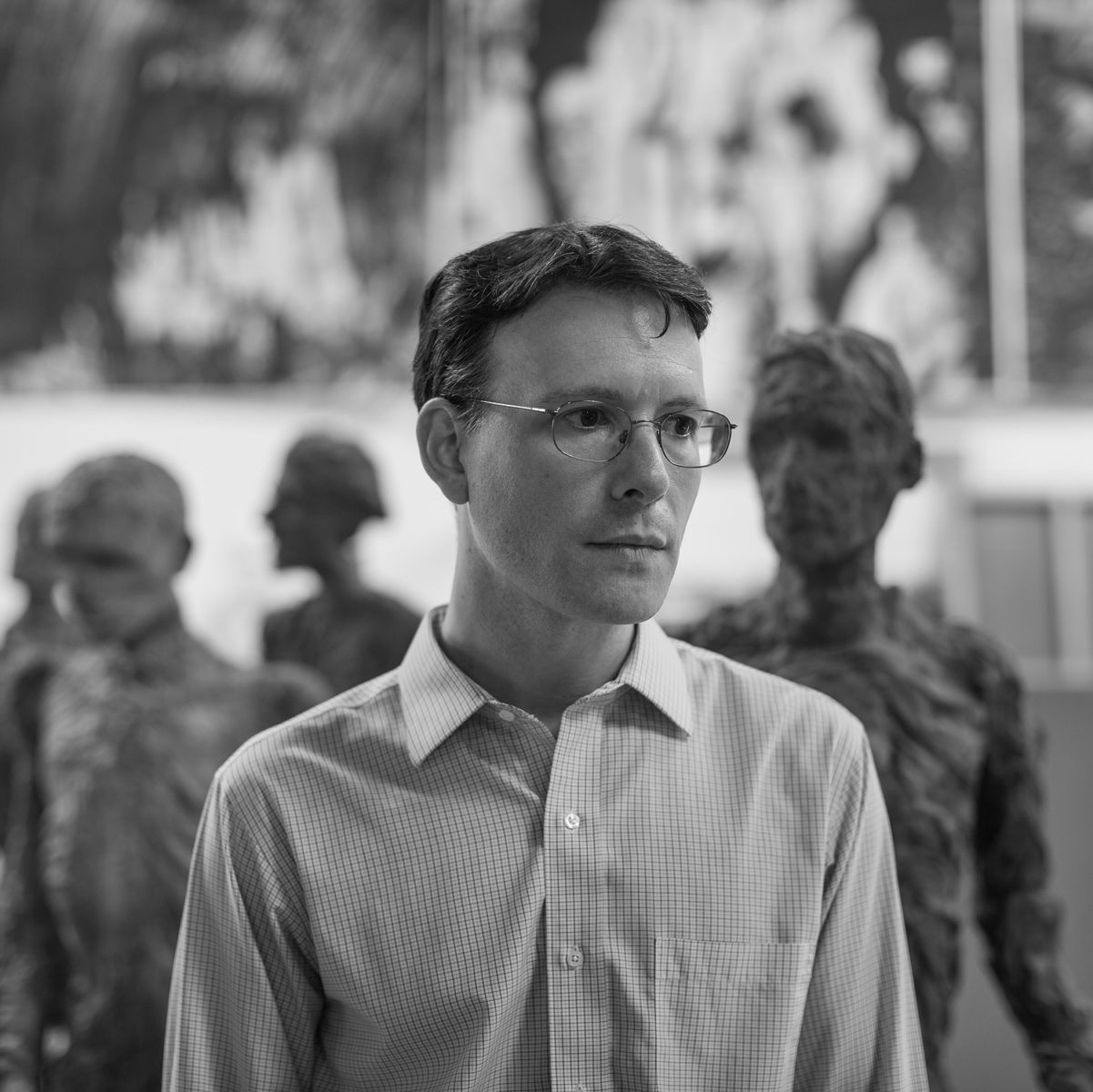
“one of the most fertile musical minds to emerge in the U.S. over the past generation” – The Financial Times
“a natural musical genius who continues to surpass himself” – The Washington Post
“masterly modernist music of implacable seriousness” –The New Yorker
“Hersch’s language never hesitates to leap into the abyss – and in ways that, for some listeners, go straight to parts of the soul that few living composers touch.” – The Philadelphia Inquirer
MICHAEL HERSCH
Described by The New York Times as a composer of works “often startling in their complexity, beauty and demonic fury,” Michael Hersch’s music been performed in the U.S. and abroad under conductors including Mariss Jansons, Alan Gilbert, Marin Alsop, Robert Spano, Carlos Kalmar, Yuri Temirkanov, Giancarlo Guerrero, and James DePreist; with the major orchestras of Cleveland, Saint Louis, Pittsburgh, Atlanta, Baltimore, Dallas, Seattle, and Oregon, among others; and ensembles including the String Soloists of the Berlin Philharmonic, the Chamber Orchestra of Philadelphia, Ensemble Klang, the Kreutzer Quartet, the Blair Quartet, NUNC, and the Network for New Music Ensemble. In recent years he has worked closely with violinist Patricia Kopatchinskaja, who has commissioned several works from him, including his Violin Concerto. Hersch has also written for such soloists as Thomas Hampson, Midori, Garrick Ohlsson, Shai Wosner, Miranda Cuckson, Béla Fleck, and Boris Pergamenschikow.
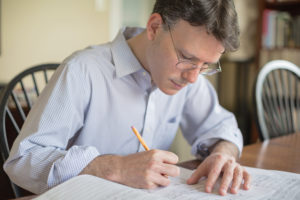 His solo and chamber works have appeared on programs around the globe – from the Chamber Music Society of Lincoln Center and Carnegie Hall in the U.S. to Germany’s Schloss Neuhardenberg Festival in Brandenberg and the Philharmonie in Berlin; from the U.K.’s Dartington New Music Festival and British Museum to Italy’s Romaeuropa and Nuova Consonanza Festivals. Performances in the far east include those with the Singapore Symphony Orchestra and Japan’s Pacific Music Festival.
His solo and chamber works have appeared on programs around the globe – from the Chamber Music Society of Lincoln Center and Carnegie Hall in the U.S. to Germany’s Schloss Neuhardenberg Festival in Brandenberg and the Philharmonie in Berlin; from the U.K.’s Dartington New Music Festival and British Museum to Italy’s Romaeuropa and Nuova Consonanza Festivals. Performances in the far east include those with the Singapore Symphony Orchestra and Japan’s Pacific Music Festival.
Recent and upcoming premieres include his Violin Concerto, with the Saint Paul Chamber Orchestra, the Avanti Festival in Helsinki, and the Lucerne Festival in Switzerland; the NYC premiere of Zwischen Leben und Tod, at the newly established National Sawdust, new productions in Chicago, Washington, and Salt Lake City of his monodrama, On the Threshold of Winter, described by The Baltimore Sun as a work of “great originality, daring, and disturbing power.” The monodrama premiered in 2014 at the Brooklyn Academy of Music. Of the premiere The New York Times noted: “Death casts a long shadow over the recent work of Mr. Hersch … But in On the Threshold of Winter Mr. Hersch has given himself the space to burrow past anger and incomprehension in search of an art fired by empathy and compassion.” Over the past several years, Hersch has also written new works for the Orpheus Chamber Orchestra, Alban Berg Ensemble Wien, the Library of Congress, and Holland’s Ensemble Klang. Other notable recent events include European performances by the Kreutzer Quartet of Images From a Closed Ward in the U.K. and Sweden, and the premiere of Of Sorrow Born: Seven Elegies, a work for solo violin commissioned by the New York Philharmonic, premiered at the orchestra’s Biennial.
Born in Washington D.C. in 1971, Michael Hersch came to international attention at age twenty-five, when he was awarded First Prize in the Concordia American Composers Awards. The award resulted in a performance of his Elegy, conducted by Marin Alsop in New York’s Alice Tul-ly Hall. Later that year he became one of the youngest recipients ever of a Guggenheim Fellow-ship in Composition. Mr. Hersch has also been the recipient of the Rome Prize, the Berlin Prize, the Goddard Lieberson Fellowship from the American Academy of Arts & Letters, and many other honors.
Also a gifted pianist, Mr. Hersch has appeared around the world including appearances at the Van Cliburn Foundation’s Modern at the Modern Series, the Romaeuropa Festival, the Phillips Collection in Washington D.C., Cleveland’s Reinberger Chamber Hall, the Festival of Contem-porary Music Nuova Consonanza, the Warhol Museum, the Network for New Music Concert Se-ries, the Left Bank Concert Society, Festa Europea della Musica, St. Louis’ Sheldon Concert Hall, and in New York City at Merkin Concert Hall, the 92nd St. Y Tisch Center for the Performing Arts, and Carnegie Hall’s Weill Recital Hall, among others. Mr. Hersch currently serves as chair of the composition faculty at the Peabody Institute of the Johns Hopkins University.
2017 Festival Reviews
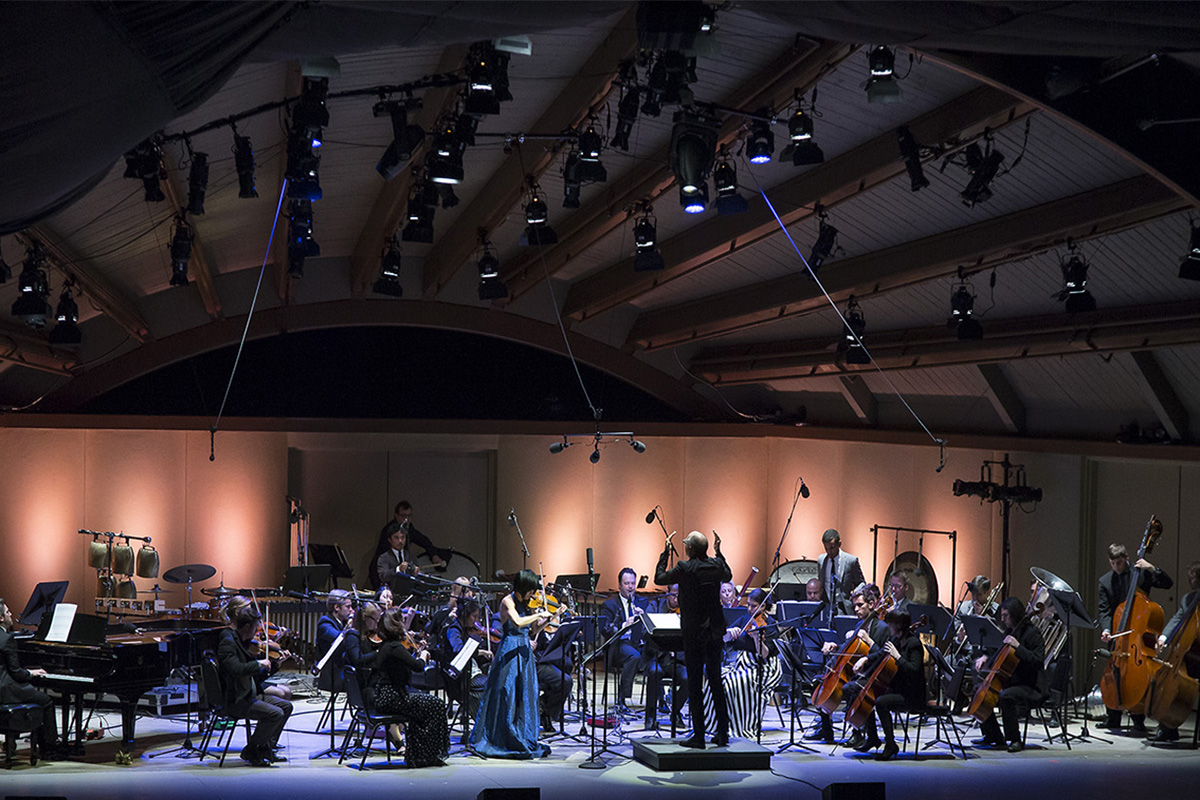
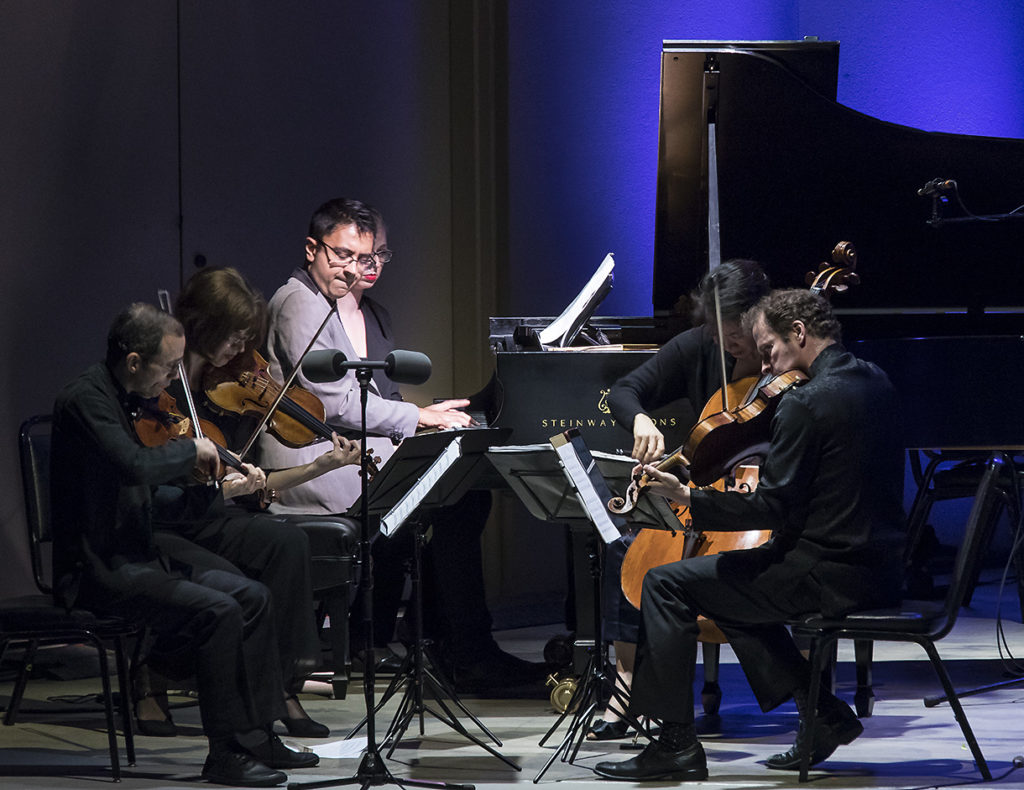
The 2017 Ojai Music Festival with Music Director Vijay Iyer embodied the spirit of the Festival with an openness to discovery and stretching musical boundaries. This year as Vijay expressed the 71st edition was an opportunity to bring various communities together. Relive the 2017 Festival anytime by watching our archived live streaming concerts on our You Tube channel.
Feedback from our audience, artists, and members of the press is important to us. Read review excerpts, which we will continue to update as press reviews come in, or download the PDF version here.
[Vijay Iyer] made a festival with a history of daring and risk-taking become more vital and daring than ever. – San Diego Union-Tribune
The compelling feature was in what appeared to be Iyer’s own quest to find examples of how to take the next step and make the music your own.
For that he brought some of the great masters of day, with special and illuminating attention on Chicago’s Association for the Advancement of Creative Music. Friday night, Iyer presented the West Coast premiere of George Lewis’ brilliant 2015 opera, “Afterword,” written to commemorate the 50th anniversary of AACM” – Los Angeles Times
Over the weekend, we heard Iyer in multiple settings. He showed his ever-deepening attributes as a composer, most notably in the impressive world premiere of his engaging Violin Concerto, “Trouble,” for style-flexible virtuoso Jennifer Koh (whose late-night solo concert “Bach And Beyond,” melding Bach, Berio and others, was a bold highlight of the weekend). – DownBeat magazine
Proving once again that for the truly fearless, nothing is impossible, the 2017 Ojai Music Festival effectively erased the boundaries between jazz, classical, traditional Indian music, and more over the course of four sound-packed days in and around Libbey Bowl. – Santa Barbara Independent
Improvisation and invention from two continents staked out new ground somewhere in between. Was it jazz? Maybe. But as a whole, this year’s gathering in Ojai thrived under its long-held, suitably broad umbrella of “music festival,” and an excellent, engrossing one at that. Ultimately, those are the only labels that matter. – Los Angeles Times
Sharing Ojai: Insider Tips for Festival Goers
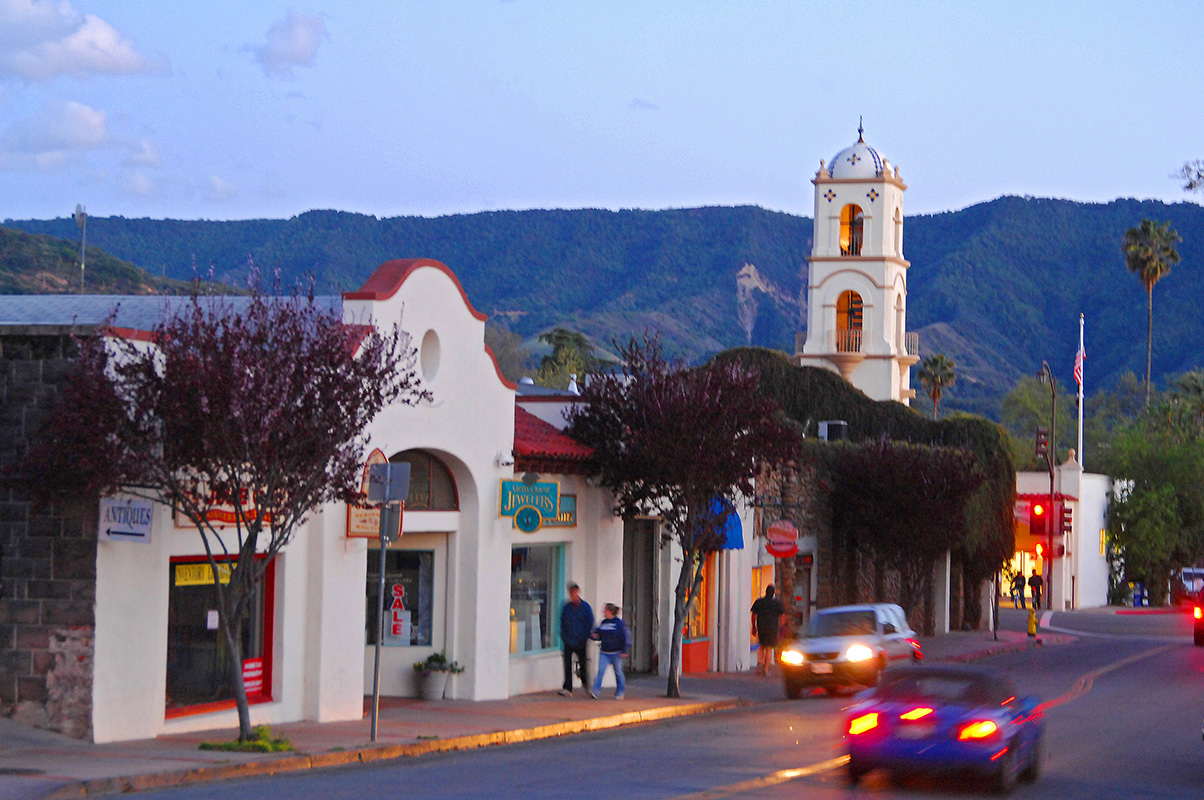
Freelance writer/fine art and antiques broker Leslie A. Westbrook covers Ojai and Ventura County for Ventana magazine and the Ventura County Reporter among other outlets.
She had been attending the Ojai Music Festival off and on for more than three decades. Her father – “under the radar” jazz pianist and composer Forrest Westbrook – joined her at the Festival during the later part of his life and became a fan as well. Leslie really wishes he was still alive to partake in this year’s jazzy fest— but he will be with her in spirit. We asked Leslie for some of her favorite spots and things to do in Ojai and she has a nice long list to share:
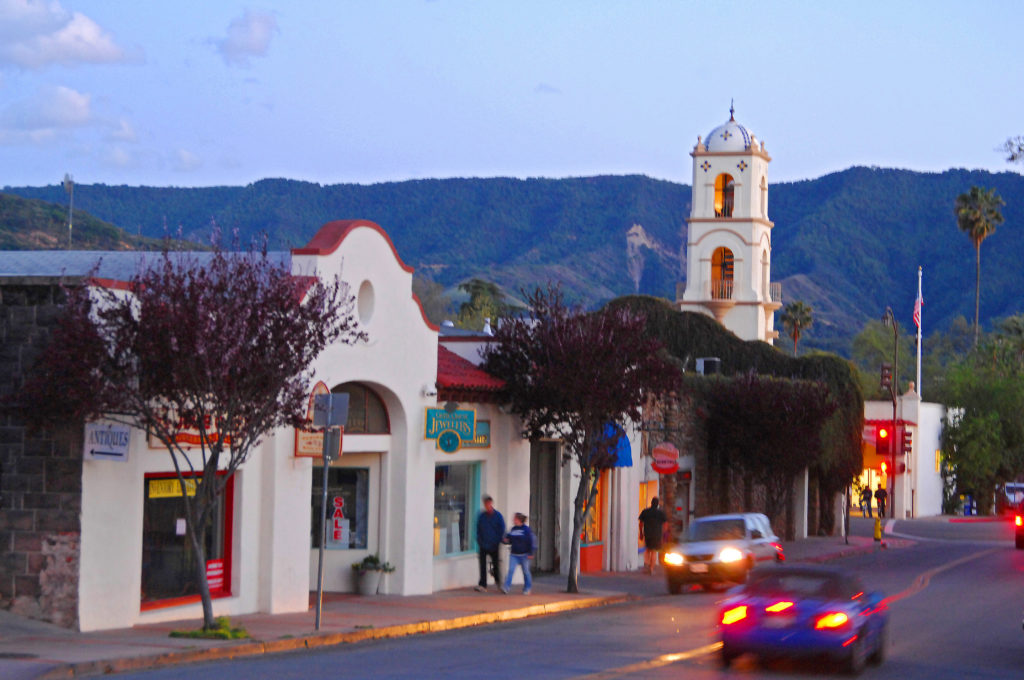
Music fans cannot live on music alone (well, almost) so what to do in-between concerts? Explore the valley and all it has to offer. Here are a few more reasons (as if you needed one!) to hit Ojai for the Festival this year.
EAT
For quick, casual but tasty Mexican, two hole-in-the wall spots popular with locals:
The pineapple tamales at La Fuente (tucked into the corner of a strip mall) are sweetly addictive, but there are six other flavors ranging from cheese and chili to corn or pork. Street tacos on homemade rosemary tortillas at Ojai Tortilla House satisfy – be prepared to wait in line and eat on the street (no tables here), or better yet, head to Libbey Park and grab a picnic table where you can also enjoy the Rio Negro II sound installation.
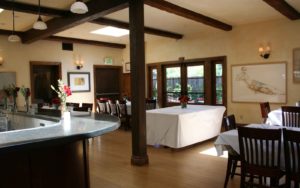
Quick nibble before the tennis court pre-concert chat and evening concert? Pop into Azu for tapas and beers. Looking for a great gluten-free meal – Food Harmonics is the new “kid on the block” right on the Arcade.
For a more leisurely meal, Suzanne’s is a long time favorite for concert goers (seafood entrees at dinner; salads at lunch); Nocciola is a wonderful alternative in town. Leave plenty of time so you don’t miss a concert to indulge in the tasting menus in this charmingly restored historic Craftsman bungalow – Bravo to owner/chef Pietro Biondi for bringing a tasty bit of Italy to Shangri-La.
DRINK
Wake UP! and smell the freshly roasted coffee sourced and roasted by the owners at Beacon Coffee Co. (new since last year’s fest) and a tasty savory or grab a cuppa java at longtime fave Ojai Roasting Co. The gigantic berry muffins at Ojai Café Emporium will hold you through morning concerts.
Midday refreshment? Grab a smoothie or healthy salads from the deli case at Rainbow Bridge – and people watch from a street side table.
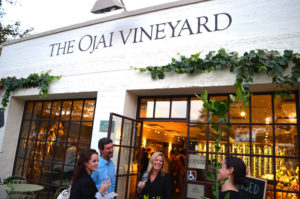
Pop in for a pre-concert wine tasting at The Ojai Vineyard tasting room – we’ve never had a bad wine from winemaker Adam Tolmach. At the Festival’s new “Pub in the Park” on Friday and Saturday night, Attitude Adjustment will have OV wines available for purchase.
PRAY/MEDITATE / CHILLAX
Ojai is famous as a spiritualist retreat and community, Krishnamurti lived here – visit the philosopher’s library and former home in Ojai’s East End. Or head to Meditation Mount for stunning views of the valley.
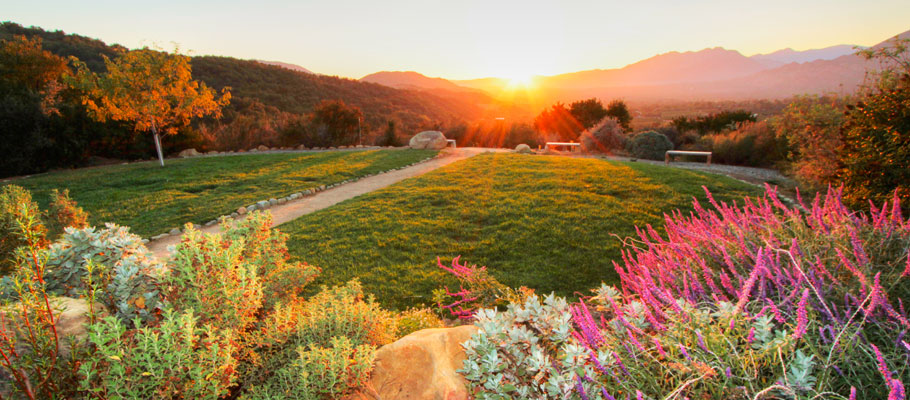
LOVE ART
From contemporary fine art to handmade pottery, Ojai prides itself on the talent in the valley. If you like what you see, plan to revisit Ojai during the annual Studio Artists Tour in the fall and visit studios and meet the artists.
The Porch Gallery shows cutting edge contemporary art, During the Festival check out its current exhibit – the Ojai Invitational 2017: “California Space & Light”, a collaboration with EMS Arts featuring selected works by Kelly Berg, Brad Howe, Andy Moses and Jennifer Wolf.
Ojai has an earthly side, too. Contemporary ceramics can be purchased at PSpace Pottery or take a drive up and over the grade to visit Ojai icon Beatrice Wood’s (1893-1998) pottery studio, who credited her longevity thusly: “I owe it all to art books, chocolates, and young men.”). We’d add good music.
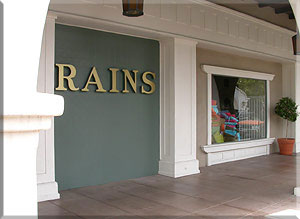
SHOP
De Kor & Co, is a great emporium for a mix of home wares, clothing and cool gifts. Rains is an old-fashioned department store and Ojai institution. Walk on through – for men and women’s clothing and a great kitchen department! Partake in olive oil tasting at former high fashion mode Carolina Gramm’s gorgeous shop – she flavors EVOO and vinegars as well with subtle flavors. Walnut balsamic vinegar is a fav, but find your own amidst the vast array.
STROLL
Don’t miss the Sunday Farmer’s Market – Mingle with locals and check out Ventura County’s rich cornucopia of flavorful, fresh organic produce. Nibble on popsicles in unique flavors (chili anyone?), chocolates made by a mother/daughter team, baked goods and other treats and you might even find Golden State papayas – who knew these tropical treats are raised in our region?
NATURE
Need to stretch? Hike Shelf Road – or take a drive 3 miles to stroll Taft Gardens to admire exotic and rare botanicals from Australia and beyond.
Last but not least, don’t miss Ojai’s famous Pink Moment – the magic glow at sunset that kisses the Topa Topa mountain range.
- Leslie A. Westbrook
2017 Ojai Music Festival Program Notes
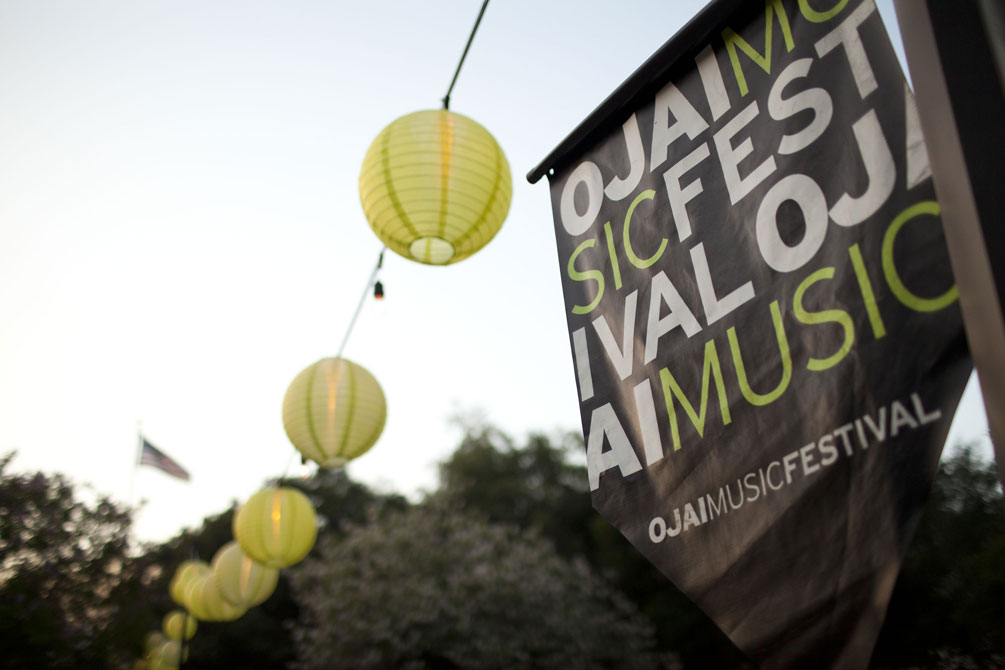
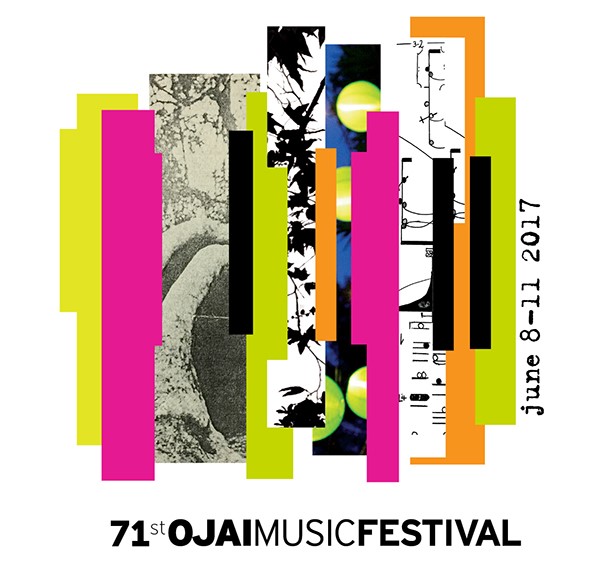
A Message from the Music Director
Thank you for joining us for these very special days and nights of music in Ojai. After two years of planning, we’ve somehow managed to gather dozens of my favorite artists: creative visionaries across generations, geographies, and histories, every one of them beyond category.
I am honored to be a featured composer and pianist throughout this Festival, but I’m even more pleased to report that it’s not all about me. You will find many other recurring themes over the weekend: improvisation and “real-time” music making; American experimentalism; radically inventive composer-performers; non-European musical systems; dialogue between the past and the present; collective struggles against racism and oppression; and central to all of this, the legacy of the Association for the Advancement of Creative Musicians (AACM).
You will recognize some performers and composers from past Festivals (Aruna Sairam, Tyshawn Sorey, Steven Schick, George Lewis, ICE), and you will meet others whose sounds are new to Ojai (Jen Shyu, Courtney Bryan, and myself). You will meet legendary elders (Zakir Hussain, Muhal Richard Abrams, and Roscoe Mitchell) and younger upstarts (Steve Lehman, Rudresh Mahanthappa, and Cory Smythe). You will hear state-of-the-art interpreters (Jennifer Koh, Brentano Quartet, Claire Chase, and Helga Davis) and wizardly real-time creators (Graham Haynes, Wadada Leo Smith, Nicole Mitchell, and Mark Shim). You will hear music as object—composed opuses, whether finished centuries ago or with ink still fresh—and you will hear music as process—the sonic choices of networks of actors moving in relation to each other and to their environment. And you might notice that—to some degree, every musical performance contains both of these elements.
By now you’ve probably heard or read my suggestion that we should replace the word “genre” with “community”—a very different word, concerned not with styles, but with people. I realize that the latter has become a no-less-hackneyed term, wishful and forced, invoked too often. With this distinction I only meant to point out a simple truth about music: In listening to each other, we become connected. When done with patience and compassion, listening can elicit recognition of the other as a version of one’s own self. This kind of empathic listening shakes us out of our habitual role as musical “consumers,” by reminding us that music is the sound of human action, and not a disembodied substance. It de-centers “the composer” as the primary actor in music, and reorients us instead towards the shared present: being together in time. Empathic listening begins to bring all of us in, music makers and observers alike, towards a shared purpose.
Here we find common cause with Judith Butler’s Notes Toward a Performative Theory of Assembly, her recent far-reaching meditations on the politics inherent in the act of gathering. When we, as assembled bodies, are able to theorize a common purpose—to reflect upon ourselves, or to dream together, if you prefer—that is the moment that we become political; that is when we are first able to unite around something larger than the self, deeper than aesthetic enjoyment, more urgent than mere curiosity. In this sense, I would add, the moment we commit to empathetic listening, to hearing one another as fellow human beings, we immediately have the potential for not just community, but equality and justice, through direct action and collective transformation. And I am certain that such moments, such purposeful shared presence—a power stronger than itself—will emerge, here, this weekend, with and among each other.
So I thank you, once again, for assembling, and for listening.
VIJAY IYER
Click here to read the 2017 Ojai Music Festival Program Notes
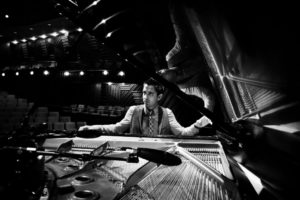
Ojai’s 2017 Music Director Vijay Iyer and Q2 Music Host Helga Davis will highlight the upcoming Festival, along with Jennifer Koh, George Lewis, Wadada Leo Smith, and Tyshawn Sorey
For tickets to the April 13, 7:00pm event, visit TheGreeneSpace.org or watch a live video stream of the event at Q2Music.org
“I’m honored, as Music Director of the 2017 Ojai Music Festival, to convene this gathering of some of the most brilliant and important music-makers that I know. Our evening of music and conversation at The Greene Space offers a glimpse of the scope of this four-day event in Southern California, with a few of the incredible artists who will be on hand: George Lewis, whose opera Afterword will have its west coast premiere at the Festival; composer-trumpeter Wadada Leo Smith, a collaborator and mentor of mine, will join me in duets from our project A Cosmic Rhythm with Each Stroke; the dazzling violinist Jennifer Koh will perform some of the ancient and cutting-edge solo music from her sprawling repertoire; and multi-instrumentalist-composer Tyshawn Sorey will offer some of his latest creations.” – Vijay Iyer, 2017 Music Director
(OJAI, CA – March 29, 2017) — In advance of the upcoming 2017 Ojai Music Festival (June 8-11), the Festival and media partner WQXR’s Q2 Music present an evening of discussion and performance on April 13, at 7pm, at The Jerome L. Greene Performance Space in New York as part of their three-year partnership.
Q2’s Helga Davis will host Ojai Music Director Vijay Iyer to discuss and explore the upcoming 2017 Festival. Joining Mr. Iyer in performance and conversation will be violinist Jennifer Koh, composer/trombonist George Lewis, trumpeter Wadada Leo Smith, and composer/percussionist Tyshawn Sorey.
Helga Davis, also a 2017 Ojai Music Festival artist in Courtney Bryan’s Yet Unheard, will focus the April 13 evening around the intersection of music composed and improvised. The Association for the Advancement of Creative Music (AACM) has engaged this dichotomy since its inception, and the AACM serves as an underlying thread in the April 13 event as well as the upcoming Ojai Music Festival. The evening will feature solo performances by Vijay Iyer and duets by Mr. Iyer and Tyshawn Sorey, as well as Mr. Iyer and Wadada Leo Smith in excerpts from their acclaimed release A Cosmic Rhythm with Each Stroke. Rounding out the evening, Jennifer Koh will perform Esa-Pekka Salonen’s chaconne for solo violin Lachen verlernt (Laughing Unlearnt). Composer George Lewis will join the artists in discussion with Ms. Davis.
This marks the second year of Ojai Music Festival events presented by Q2 Music at The Greene Space. Last spring’s event featured Ojai’s 2016 Music Director Peter Sellars, guitarist of the International Contemporary Ensemble (ICE) Dan Lippel, soprano Julia Bullock, and vocalist/pianist Leila Adu. The Jerome L. Greene Performance Space’s mission is to galvanize conversations around the life, arts, and politics of New York and our world.
Tickets, April 13 at 7pm
Tickets for the event are $20 and can be purchased at TheGreeneSpace.org where the event will be webcast live.
Ojai Music Festival and WQXR’s Q2 Partnership
Launched in 2015, additional highlights of the 2017 partnership with WQXR’s Q2 Music feature immersive access to select new music concerts at Q2Music.org beginning May 1, 2017, as well as a three-part series of special programs showcasing performances from the 2016 Festival, hosted by Ojai’s 2016 Music Director Peter Sellars. Q2 Music audiences can also access performances from prior Festivals with hosts Mark Morris (2013 Music Director) and Steven Schick (2015 Music Director). Imagined as a multiyear collaboration, the Festival and Q2 Music aim to celebrate a shared artistic aesthetic, build audiences and connect respective communities.
About Q2 Music
Q2 Music is WQXR’s online platform dedicated to contemporary classical composers, innovative ensembles and musical discovery. Its programming includes immersive festivals, insightful commentary from hosts such as composer Phil Kline and vocalist Helga Davis, full-length album streams, live webcasts and exclusive concert audio from local and national venues, and special events in front of live audiences at The Jerome L. Greene Performance Space at WQXR in downtown New York City. Q2 Music produces Meet the Composer with host Nadia Sirota, a Peabody Award-winning interview podcast which mines the brains of today’s leading composers, as well as LPR Live, a podcast which shares dynamic new-music performances from Greenwich Village’s Le Poisson Rouge. Q2 Music is streamed live 24/7 at WQXR.org/Q2Music and is also available via the free WQXR App.
Ojai Music Festival, June 8-11, 2017
Of the upcoming Ojai Music Festival, Vijay Iyer commented, “When I was invited to take on the role of Music Director for the 2017 Ojai Music Festival, it was a shocking but validating proposition. As an artist, I like to insert myself into situations where some might not necessarily imagine I belong. I have many different affinities musically, and also very real associations across different musical communities, generations, geographic locations, and traditions that speak to me and through me. Our 2017 Festival feels like a good opportunity to update the idea of what music is today. I know the hallowed history of this Festival and I’ve seen different versions of what it can be. I’m just glad that Tom Morris invited me to intervene, and to bring my people with me. I’m going to learn so much over those few days in June, and I believe everyone there will discover a great deal – not just about music, but about themselves.”
For complete 2017 Ojai Music Festival information, please see the Festival calendar at OjaiFestival.org. Experience the Festival in Ojai (June 8-11) or remotely via Ojai Live webcast (June 8-11); or visit Ojai at Berkeley (June 15-17).
Ojai Music Festival Tickets
Festival single tickets \ may be purchased online at OjaiFestival.org or by calling (805) 646-2053. Tickets range from $40 to $150 for reserved seating and are $15 for lawn tickets. Student and group discounts are also available.
Directions to Ojai and performance venues, as well as information regarding lodging, a concierge service, and other Ojai activities, are also available on the Ojai Music Festival web site.
Ojai Live webcast of 2017 Festival
Ojai Live begins on Thursday, June 8 with the evening concert at Libbey Bowl. The dynamic multi-camera live webcast brings the Ojai Music Festival to audiences around the world with live broadcasts of performances and interview segments. Watch Ojai Live at OjaiFestival.org.
Ojai at Berkeley
Marking the seventh year of artistic partnership, Ojai at Berkeley celebrates the dynamic nature of the Ojai Music Festival and of Cal Performances. As two distinct communities, Ojai and Berkeley are both known for intrepid artistic discovery, spirited intellect, and enduring engagement in the arts. Inaugurated in 2011, Ojai at Berkeley is a joint force that enables co-commissions and co-productions and allows artists to achieve more than could be imagined by each organization separately. Ojai at Berkeley follows the 2017 Ojai Music Festival and will take place from June 15-17 in Berkeley, CA. For more information visit CalPerformances.org.
Vijay Iyer, 2017 Ojai Music Festival Music Director
Composer-pianist Vijay Iyer is the Franklin D. and Florence Rosenblatt Professor of the Arts at Harvard University. He was named Downbeat Magazine’s Jazz Artist of the Year for 2012, 2015, and 2016, and he received a 2016 US Artists Fellowship, 2013 MacArthur Fellowship, a 2012 Doris Duke Performing Artist Award, and a 2011 Grammy nomination. He has released twenty-one albums, including A Cosmic Rhythm with Each Stroke (ECM, 2016) in duo with legendary composer-trumpeter Wadada Leo Smith, named “Best New Music” by Pitchfork; Break Stuff (ECM, 2015) with the Vijay Iyer Trio, winner of the German Record Critics’ Award for Album of the Year; the live score to the film RADHE RADHE: Rites of Holi (ECM, 2014) by filmmaker Prashant Bhargava; and Holding it Down: The Veterans’ Dreams Project (Pi Recordings, 2013), his third politically searing collaboration with poet-performer Mike Ladd, named Album of the Year in the Los Angeles Times.
Mr. Iyer’s compositions have been commissioned and premiered by Bang on a Can All-Stars, The Silk Road Ensemble, Ethel, Brentano Quartet, Brooklyn Rider, Imani Winds, American Composers Orchestra, International Contemporary Ensemble, Chamber Orchestra Leopoldinum, Matt Haimowitz, and Jennifer Koh. Mr. Iyer serves as Director of the Banff International Workshop in Jazz and Creative Music.
About the Ojai Music Festival
From its founding in 1947, the Ojai Music Festival has created a place for groundbreaking musical experiences, bringing together innovative artists and curious audiences in an intimate, idyllic setting 80 miles northwest of Los Angeles. The Festival presents broad-ranging programs in unusual ways with an eclectic mix of rarely performed music, refreshing juxtapositions of musical styles, and works by today’s composers. The four-day festival is an immersive experience with concerts, free community events, symposia, and gatherings. Considered a highlight of the international music summer season, Ojai has remained a leader in the classical music landscape for seven decades.
Through its unique structure of the Artistic Director appointing an annual Music Director, Ojai has presented a “who’s who” of music including Aaron Copland, Igor Stravinsky, Olivier Messiaen, Michael Tilson Thomas, Kent Nagano, Pierre Boulez, John Adams, Esa-Pekka Salonen, Robert Spano, Pierre-Laurent Aimard, David Robertson, Eighth Blackbird, George Benjamin, Dawn Upshaw, Leif Ove Andsnes, Mark Morris, Jeremy Denk, Steven Schick, and Peter Sellars.
The Festival, which enters its 71st year in 2017, is a nonprofit organization based in Ojai, California. David Nygren serves as the board chairman, Jamie Bennett is the president, and Thomas W. Morris serves as Artistic Director.
2017 Imagine Concert featuring Nestor Torres and Student Musicians
The annual Imagine concert in February was all about sharing music with students by students. Both the Matilija Junior High School and Nordhoff High School music students performed to a crowd of close to 500 local Ojai and Ventura-area elementary students.
This year a special highlight was a guest appearance by GRAMMY Latin Jazz winner Nestor Torres, who performed for the students and a surprise improvisatoin session along side the student musicians.
Photos courtesy of Kirby Russell.
“We got to experience the excitement of improvising real jazz on the spot with an amazing player, as well as learn to listen to each other and share the spotlight to create music of our own. It also taught us to push our bodies in what we thought we were capable of doing and showed us that, just like anything else, music can be a form of communication that gives us a voice to speak our own message.”– Noah Byle, 12th grade, Nordhoff High School
[ngg_images source=”galleries” container_ids=”96″ display_type=”photocrati-nextgen_pro_masonry” size=”180″ padding=”10″ ngg_triggers_display=”always” captions_enabled=”1″ captions_display_sharing=”0″ captions_display_title=”1″ captions_display_description=”1″ captions_animation=”slideup” order_by=”sortorder” order_direction=”ASC” returns=”included” maximum_entity_count=”500″]“The Imagine concert is a wonderful part of the musical culture of Ojai! The middle school performers remember attending the concert as elementary school students. They tell me with a great deal of enthusiasm about the performances they watched, and they are proud to now be part of the show. In turn, their collaboration with the high school students give them a taste of the next level of musicianship. To top it all off, the guest performers never cease to expand our idea of what is possible.” — Thomas Fredrickson, Matilija Junior High School Music Director
Ojai Music Festival and 2017 Music Director Vijay Iyer Announce the 71st Festival Program June 8-11, 2017
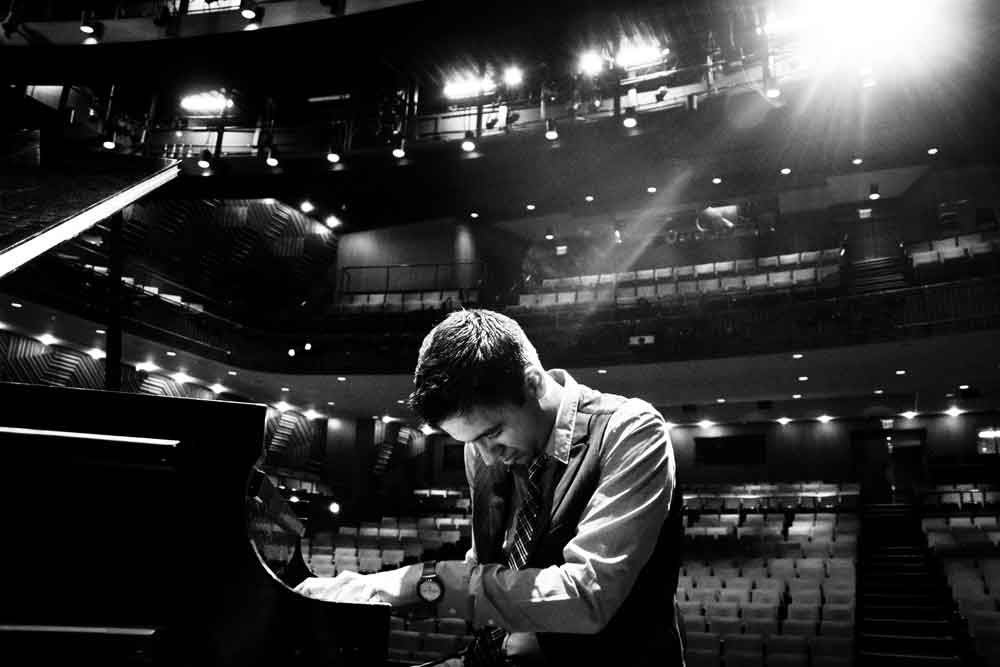
Vijay Iyer is joined by a community of artistic collaborators, including returning Ojai family members 2015 Music Director Steven Schick, International Contemporary Ensemble (ICE), Carnatic vocalist Aruna Sairam, flutist Claire Chase, and composer/percussionist Tyshawn Sorey
Iyer introduces Ojai to master musicians from various backgrounds and communities: Brentano Quartet; violinist Jennifer Koh; vocalist/composer Jen Shyu; Vijay Iyer Trio; Vijay Iyer Sextet; Tyshawn Sorey Double Trio; tabla virtuoso Zakir Hussain; saxophonist Rudresh Mahanthappa; trumpeter Wadada Leo Smith; and The Trio featuring Muhal Richard Abrams, George Lewis, and Roscoe Mitchell
Highlights of the 2017 Festival include the world premiere of Vijay Iyer’s Violin Concerto, written for and performed by Jennifer Koh; the American premiere of Iyer’s Emergence for trio and ensemble; RADHE RADHE: Rites of Holi with music by Iyer and film by Prashant Bhargava; the West Coast premiere of the opera Afterword by George Lewis; and Yet Unheard (world premiere of chamber version) by Courtney Bryan
Cal Performances’ Ojai at Berkeley is slated for June 15-17, 2017 following the Ojai Music Festival
download pdf version
download 2017 schedule
(November 16, 2016– Ojai, California) – The Ojai Music Festival, June 8-11, 2017, with Music Director Vijay Iyer celebrates diverse communities of music, artists, and collaborations in a weekend of stimulation and reflection.
Artistic Director Thomas W. Morris stated, “Vijay Iyer is usually described as a composer, a pianist, an improviser, a collaborator, and a teacher. What really distinguishes him, however, is not just what he does but who he is and what he stands for. Vijay believes a life in the arts is a life of service in imagining, building, and enacting community that transcends heritage, nation, and creed. The 2017 Festival reflects these beliefs in the range of collaborators joining us – from Carnatic vocalist Aruna Sairam to percussionist/composer Tyshawn Sorey, to the virtuosic ensemble ICE, to trumpet legend Wadada Leo Smith; in the breadth of roles Vijay will play – from composer, to performer, to collaborator, to intellectual guide; and in the historical and social perspectives represented by the music and artists – from how so much of the Festival’s foundation is based on the groundbreaking Association for the Advancement of Creative Music (AACM), to young composer Courtney Bryan’s powerful tribute to Sandra Bland, a vivid testimony to music’s ability to bring communities together in healing.”
Vijay Iyer commented, “When I was invited to take on the role of Music Director for the 2017 Ojai Music Festival, it was a shocking but validating proposition. As an artist, I like to insert myself into situations where some might not necessarily imagine I belong. I have many different affinities musically, and also very real associations across different musical communities, generations, geographic locations, and traditions that speak to me and through me. Our 2017 Festival feels like a good opportunity to update the idea of what music is today. I know the hallowed history of this Festival and I’ve seen different versions of what it can be. I’m just glad that Tom Morris invited me to intervene, and to bring my people with me. I’m going to learn so much over those few days in June, and I believe everyone there will discover a great deal – not just about music, but about themselves.”
Watch Vijay Iyer Discuss the 2017 Festival
Much of the four-day Festival programming revolves around the Association for the Advancement of Creative Musicians (AACM), an organization founded in Chicago in 1965 by a group of African-American experimentalists. Musicians of the AACM were not only committed to an adventurous synthesis of music making strategies – contemporary and ancient, familiar and faraway – but their very being was framed out of the Civil Rights struggles of that era. The New York Times, on the occasion of the 50th anniversary of the AACM a year ago said, “The AACM has been one of the country’s great engines of experimental art, producing work with an irreducible breadth of scope and style.” Some of the original founding AACM members, including Wadada Leo Smith, Muhal Richard Abrams, and Roscoe Mitchell will be featured 2017 Ojai artists, as will composer/trombonist George Lewis, whose book A Power Stronger Than Itself: The AACM and American Experimental Music tells the definitive history of the AACM. Lewis’ opera Afterword, which is receiving its West Coast premiere, is based on the history of the organization.
The 2017 Festival begins on Thursday, June 8 showcasing the talents of Vijay Iyer. The program features two recent works by Mr. Iyer, the American premiere of Emergence, performed by ICE and the Vijay Iyer Trio conducted by Steven Schick; and the world premiere of his Violin Concerto, a co-commission by the Ojai Music Festival, Cal Performances in Berkeley, and the Boston Symphony Orchestra. The Violin Concerto was composed for and will be performed by violinist Jennifer Koh. The evening closes with a duo comprising Mr. Iyer and the celebrated trumpet player and a founder of the AACM, Wadada Leo Smith. Described by Mr. Iyer as his “hero, friend, and teacher,” Mr. Smith collaborates with the pianist on music that is “spellbinding and traverses musical identities.”
The two-part Friday afternoon concert on June 9 features flutist Claire Chase performing a selection from her recent Density 2036 project, a 22-year program conceived by Ms. Chase in 2014 to commission an entirely new body of repertory for solo flute each year until the 100th anniversary of Edgard Varèse groundbreaking 1936 flute solo. Following Density 2036 will be a rare performance by Tyshawn Sorey’s Double Trio in a program called “The Inner Spectrum of Variables.” Mr. Sorey made his Ojai debut last year composing music for and performing in the Josephine Baker Portrait.
Friday evening’s concert features the West Coast premiere of George Lewis’ opera Afterword, for a small ensemble and three singers, performed by ICE with soprano Joelle Lamarre, contralto Gwendolyn Brown, and tenor JuIian Otis, all of whom sang in the 2016 American premiere of the work in Chicago, and with Steven Schick conducting. A 2002 MacArthur Fellow, George Lewis is a composer, theorist, musicologist, and virtuoso trombonist with an endowed chair at Columbia University. His A Will to Adorn was performed during the 2015 Ojai Music Festival. Mr. Lewis is the author of A Power Stronger than Itself: The AACM and American Experimental Music, a prizewinning, comprehensive cultural history of this influential organization and its members. The opera Afterword draws from the book’s own afterword, consisting of transcribed dialogues and testimonials about the AACM’s founding in 1965. Afterword will be semi-staged and directed by Sean Griffin.
Saturday afternoon’s two-part concert on June 10 begins with a program by the Brentano Quartet. In addition to performing the entire two-century range of standard quartet repertoire, the Brentano Quartet has a strong interest in both old and new music. The concert features music by György Kurtág and Mozart, as well as Vijay Iyer’s Mozart Effects, written for the quartet. Following this will be Conduction® led by Tyshawn Sorey, who is widely considered to be among the most important young artists at the intersection between composed and improvised music. Conduction®, is a gestural language invented by the acclaimed cornetist and composer Lawrence D. “Butch” Morris. As defined by the composer, “Conduction® is the practice of conveying and interpreting a lexicon of directives to construct or modify sonic arrangement or composition; a structure-content exchange between composer/conductor and instrumentalists that provides the immediate possibility of initiating or altering harmony, melody, rhythm, tempo, progression, articulation, phrasing, or form through the manipulation of pitch, dynamics (volume/intensity/density), timbre, duration, silence, and organization in real-time. Conduction® is a 60-minute piece of new music for an ensemble of 20 players being composed in real time – none of the performers nor conductor have a note of music in front of them.”
The Saturday evening centerpiece is RADHE RADHE: Rites of Holi, commissioned five years ago by Carolina Performing Arts at The University of North Carolina at Chapel Hill to celebrate the centennial of Stravinsky’s Le Sacre du printemps. RADHE RADHE: Rites of Holi is a vivid and mesmerizing multimedia collaboration by Mr. Iyer and filmmaker Prashant Bhargava (who passed away in 2015 at the age of 42), exploring another sort of rite of spring, the Hindu festival of Holi, famous for its revelry of color in celebration of the love between the divine Krishna and Radha. In northern India, Mr. Bhargava filmed ravishing hi-definition images of an eight-day Holi festival, later editing the footage into a finished 37-minute film with Stravinsky’s Sacre musical structure as the basis for its film structure. Mr. Iyer composed a new score as the musical complement to Mr. Bhargava’s visual ballet, drawing at times on the rhythms and chants of the Holi festival. The result is one of Mr. Iyer’s warmest, most colorful creations to date, as rich melodically as it is texturally. The work is for an ensemble of 13 players that will be performed by ICE and conducted by Steven Schick, who will accompany the projected film live on the Libbey Bowl stage. The first half of the concert will be the West Coast premiere of a new version of Le Sacre du printemps arranged by composer Cliff Colnot for the same instrumental forces.
The final day of the Festival on Sunday, June 11 is a mini-festival of improvisation. It begins in the early morning with a free concert of living legends that will be one of the historical highlights at Ojai – The Trio featuring octogenarian pianist Muhal Richard Abrams, George Lewis on trombone and laptop, and Roscoe Mitchell on assorted woodwinds. Mr. Abrams and Mr. Mitchell were among the founders of the AACM. The afternoon concert presents Vijay Iyer and his close collaborator for more than twenty years, the award-winning saxophonist Rudresh Mahanthappa, joining forces with two living giants of Indian classical music: celebrated Carnatic vocalist Aruna Sairam and tabla maestro and world music pioneer Zakir Hussain. This day realizes one of Vijay Iyer’s dreams for the 2017 Festival, to create a new musical fabric with these remarkable artists together in Ojai. The Festival closes with Vijay Iyer and his all-star sextet including bassist Stephan Crump, Tyshawn Sorey on drums, alto saxophonist Steve Lehman, Graham Haynes on cornet and flugelhorn, and tenor saxophonist Mark Shim, an ensemble The New York Times has said, “addresses original music with a gripping sense of purpose.”
In addition to the main concert lineup there will be two Daybreak concerts both starting at 9am at Zalk Theatre at Besant Hill School in the upper Ojai for Ojai Music Festival members. On Friday, June 9 the performance features Jen Shyu, experimental vocalist, composer, multi-instrumentalist, dancer, and Fulbright scholar, who will perform her own work, Solo Rites: Seven Breaths. Saturday, June 10 features Nicole Mitchell, flutist, composer, bandleader, and educator. Ms. Mitchell’s music celebrates African American culture while reaching across genres and integrating new ideas with moments in the legacy of jazz, gospel, experimentalism, pop, and African percussion. She formerly served as the first woman president of Chicago’s Association for the Advancement of Creative Musicians (AACM).
Free Community Concerts
Ojai continues to build on its commitment to reach an ever-broader audience, and the 2017 Festival offers two free Late Night concerts in the Libbey Bowl, in addition to the Sunday morning concert. Friday evening at 10:30pm features a recital by Jennifer Koh, entitled “Bach and Beyond” in which Ms. Koh will perform works by Johann Sebastian Bach, Missy Mazzoli, Luciano Berio, and Esa-Pekka Salonen. Saturday night at 10:30pm brings Vijay Iyer together with the Brentano Quartet to perform his Time, Place, Action. The Brentano Quartet opens the concert with selections from Bach’s Art of the Fugue, and the concert closes with the American premiere of a new version of Yet Unheard by the versatile composer and pianist Courtney Bryan. Written for chorus, orchestra, and the vocalist Helga Davis, Yet Unheard sets a new text by poet Sharan Strange memorializing Sandra Bland, a 28-year-old African American woman who died in police custody in Waller County, Texas, on July 13, 2015. Her death was classified as a suicide, though protests dispute the cause of death and allege racial violence. Focusing on bridging the sacred and the secular, Ms. Bryan’s recent compositions explore human emotions through sound, confronting the challenge of notating the feeling of improvisation.
Ojai Talks
The 2017 Festival begins with Ojai Talks hosted by Ara Guzelimian, former Festival Artistic Director and current Dean and Provost of The Juilliard School. On Thursday June 8 the first part session topic is “The Art of Improvisation” with Vijay Iyer. The second part of the Talks features a panel to discuss “Music as Community” with Mr. Iyer and other prominent guests. On Friday evening, June 9 the Ojai Talks will be held prior to the 8pm concert of George Lewis’ Afterword on the Libbey Bowl stage. The session will feature a discussion on the Association for the Advancement of Creative Musicians (AACM) with special guests. Additional details will be announced at a later date.
Ojai at Berkeley
Marking the seventh year of artistic partnership, Ojai at Berkeley celebrates the dynamic nature of the Ojai Music Festival and of Cal Performances. As two distinct communities, Ojai and Berkeley are both known for intrepid artistic discovery, spirited intellect, and enduring engagement in the arts. Inaugurated in 2011, Ojai at Berkeley is a joint force that enables co-commissions and co-productions and allows artists to achieve more than could be imagined by each organization separately. Ojai at Berkeley follows the 2017 Ojai Music Festival and will take place from June 15-17 in Berkeley, CA. For more information visit CalPerformances.org.
Vijay Iyer, Music Director
Composer-pianist Vijay Iyer is the Franklin D. and Florence Rosenblatt Professor of the Arts at Harvard University. He was named Downbeat Magazine’s Jazz Artist of the Year for 2012, 2015, and 2016, and he received a 2016 US Artists Fellowship, 2013 MacArthur Fellowship, a 2012 Doris Duke Performing Artist Award, and a 2011 Grammy nomination. He has released twenty-one albums, including A Cosmic Rhythm with Each Stroke (ECM, 2016) in duo with legendary composer-trumpeter Wadada Leo Smith, named “Best New Music” by Pitchfork; Break Stuff (ECM, 2015) with the Vijay Iyer Trio, winner of the German Record Critics’ Award for Album of the Year; the live score to the film RADHE RADHE: Rites of Holi (ECM, 2014) by filmmaker Prashant Bhargava; and Holding it Down: The Veterans’ Dreams Project (Pi Recordings, 2013), his third politically searing collaboration with poet-performer Mike Ladd, named Album of the Year in the Los Angeles Times.
Mr. Iyer’s compositions have been commissioned and premiered by Bang on a Can All-Stars, The Silk Road Ensemble, Ethel, Brentano Quartet, Brooklyn Rider, Imani Winds, American Composers Orchestra, International Contemporary Ensemble, Chamber Orchestra Leopoldinum, Matt Haimowitz, and Jennifer Koh. Mr. Iyer serves as Director of the Banff International Workshop in Jazz and Creative Music.
Thomas W. Morris, Artistic Director
Thomas W. Morris was appointed Artistic Director of the Ojai Music Festival starting with the 2004 Festival. Morris is recognized as one of the most innovative leaders in the orchestra industry and served as the long-time chief executive of both The Cleveland Orchestra and the Boston Symphony Orchestra. He is currently active nationally and internationally as a consultant, lecturer, teacher, and writer. As Artistic Director, Morris is responsible for artistic planning and each year appoints a music director with whom he collaborates on shaping the Festival’s programming. During his decade-long tenure, audiences have increased and the scope of the Festival has expanded, most recently to include a collaborative partnership, Ojai at Berkeley, with Cal Performances at UC Berkeley. Morris was a founding director of Spring for Music at New York’s Carnegie Hall and served as the project’s artistic director. He currently serves as a member of the Board of Directors of the Interlochen Center for the Arts. He is also an accomplished percussionist.
About the Ojai Music Festival
From its founding in 1947, the Ojai Music Festival has created a place for groundbreaking musical experiences, bringing together innovative artists and curious audiences in an intimate, idyllic setting 80 miles northwest of Los Angeles. The Festival presents broad-ranging programs in unusual ways with an eclectic mix of rarely performed music, refreshing juxtapositions of musical styles, and works by today’s composers. The four-day festival is an immersive experience with concerts, free community events, symposia, and gatherings. Considered a highlight of the international music summer season, Ojai has remained a leader in the classical music landscape for seven decades.
Through its unique structure of the Artistic Director appointing an annual Music Director, Ojai has presented a “who’s who” of music including Aaron Copland, Igor Stravinsky, Olivier Messiaen, Michael Tilson Thomas, Kent Nagano, Pierre Boulez, John Adams, Esa-Pekka Salonen, Robert Spano, Pierre-Laurent Aimard, David Robertson, Eighth Blackbird, George Benjamin, Dawn Upshaw, Leif Ove Andsnes, Mark Morris, Jeremy Denk, Steven Schick, and Peter Sellars.
The Festival, which enters its 71st year in 2017, is a nonprofit organization based in Ojai, California. The Board Chairman is David Nygren and President is Jamie Bennett.
Remote Access to the Ojai Music Festival
The Ojai Music Festival continues to draw thousands of curious and engaged music enthusiasts from across the country. As tickets remain in high demand, Ojai includes free access to the Festival experience through live and archived video streaming at OjaiFestival.org. Festival concert archives can also be heard on media partner Q2 Music’s website at WQXR.org.
Series Passes for 2017 Ojai Music Festival
2017 Festival series passes are available and may be purchased online at OjaiFestival.org or by calling (805) 646-2053. 2017 Ojai Music Festival series passes range from $140 to $860 for reserved seating and lawn series passes start at $60. Single concert tickets will be available in spring 2017.
Directions to Ojai and Libbey Bowl, as well as information about lodging, concierge services for visitors, and other Ojai activities, are available on the Festival website. Follow Festival updates at OjaiFestival.org, Facebook (Facebook.com/ojaifestival), and Twitter (@ojaifestivals).
# # #
Prashant Bhargava
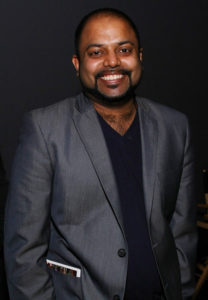 Prashant Bhargava is an award winning filmmaker and commercial director/designer, described by producer Anthony Bregman as “visionary and soulful”, “masterful” by Roger Ebert and a “humanist and real talent” by Michael Phillips of the Chicago Tribune. With his signature “hypnotically beautiful visuals”, “naturalistic storytelling” and a “colorfully vivid” poetic style, Prashant Bhargava stands at the leading edge of independent film with his “original storytelling and honest craft”.
Prashant Bhargava is an award winning filmmaker and commercial director/designer, described by producer Anthony Bregman as “visionary and soulful”, “masterful” by Roger Ebert and a “humanist and real talent” by Michael Phillips of the Chicago Tribune. With his signature “hypnotically beautiful visuals”, “naturalistic storytelling” and a “colorfully vivid” poetic style, Prashant Bhargava stands at the leading edge of independent film with his “original storytelling and honest craft”.
Bhargava’s filmmaking builds from his pioneering work as a commercial director and motion designer. Known for his intricately layered and lush visuals, Bhargava spear headed over 100 campaigns for HBO including The Wire, Def Poetry Jam, Rome and OZ and films such as Born into Brothels, John Frankenhiemer’s Path to War, Mira Nair’s Hysterical Blindness, Raoul Peck’s Lumumba, and Denzel Washington’s Antwone Fisher. Bhargava has designed effects sequences for Alex Rivera’s feature Sleep Dealer (Berlin, Sundance) and directed music videos and promos for bands Cornershop, Talib Kweli and Missy Elliot. Notable clients include Accenture, NBC, Woolrich, PBS, Blue Cross Blue Shield, Volvo and OMango. He has collaborated with numerous design and production studios including R/GA, Click 3x and Edgeworx. His commercial work has earned recognition by the Broadcast Design Assocation and Adobe Systems.
Bhargava’s feature length directorial debut, PATANG (The Kite), currently in theaters, is anthem of the old city of Ahmedabad, weaving the stories of six people during India’s largest kite festival. Defying convention in its process and cinematic language, PATANG united a community ravaged by religious conflict and natural disaster. Starring two of India’s finest actors Seema Biswas and Nawazuddin Siddiqui, PATANG is receiving rave reviews, garnering a rare 4 stars from Roger Ebert who selected chose the film as 1 of 12 films in his annual film festival. The New York Times selected PATANG as a Critics Pick, celebrating its “lovely, unforced quality”. Hailed as a “masterpiece” by celebrated composer Michael Nyman, “reminiscent of Wong Kai Wai” (Los Angeles Times), “warranting comparison to cinema’s great poet Terence Malick” (HollywoodChicago.com), PATANG has been showcased to sold out audiences across the globe in over 30 international film festivals and recognized as “one of the best films” of 2012 (Ithaca.com). PATANG premiered at prestigious Berlin Film Festival and in the highly selective main competition at the Tribeca Film Festival. PATANG is the winner of the Best Feature Narrative at the Hawaii Film Festival, Best World Narrative at the Indy Film Festival, a Special Jury Award at the Osians Film Festival in New Delhi, Best Feature Narrative at the DC APA Film Festival and received both Best Film and Best Director at SAIFF’s Rising Star Film Awards.
Bhargava’s short film SANGAM, described by Greg Tate of the Village Voice as “an elegant and poetic evocation of immigrant angst, memory and haunted spirituality”, premiered at the Sundance Film Festival, recieving awards at the Clermont Ferrand Film Festival, Nashville Film Festival and Short Shorts Asia. “Beautiful shot on Super 16, Super 8 and still photography” the “poetic and affecting” film (Indiewire) was distributed by Film Movement and MUBI and broadcast on Arte/ZDF, The Sundance Channel and PBS. His other directorial efforts include the documentary portrait of his grandmother AMMAJI, experimental Super 8 short BACKWATERS (Vimeo Staff Pick) and the poignant and meditative KASHMIR, an audiovisual performance with band Dawn of Midi on broken dreams and natural beauty in war torn Kashmir. He directed film segments for the politically searing Still Life Commentator by Vijay Iyer & Mike Ladd (BAM Next Wave Festival).
Born and raised on the southside of Chicago, Bhargava’s interest in the arts began as a graffiti artist. Bhargava studied computer science at Cornell University and theatrical directing at the Barrow Group and at the Actors Studio MFA program. He has lectured at New York University, Columbia College, Cornell University, Amherst College, CUNY, University of Chicago and CEDIM. Bhargava was an Copeland Fellow at Amherst College and New York Foundation of the Arts Fellow in both 1997 and 2012.
Bhargava’s latest collaboration with grammy nominated musician Vijay Iyer, a film with live orchestral music, is entitled RADHE RADHE: Rites of Holi. Based on Stravinsky’s Rite of Spring, the film is a journey of sexual desire and primal devotion during the vibrant celebration of Holi in Mathura, India.
http://www.patang.tv/director.php
Prashant Bhargava passed away on May 16, 2015. The Ojai Music Festival’s performance of RADHE RADHE will be dedicated to Mr. Bhargava.
Graham Haynes, cornet and flugelhorn
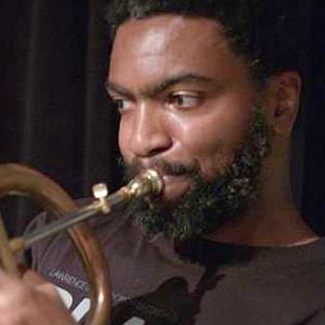
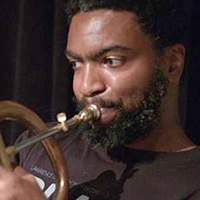 Graham Haynes is an American cornetist, trumpeter and composer. The son of jazz drummer Roy Haynes,[1] Graham is known for his work in nu jazz, fusing jazz with elements of hip hop and electronic music.
Graham Haynes is an American cornetist, trumpeter and composer. The son of jazz drummer Roy Haynes,[1] Graham is known for his work in nu jazz, fusing jazz with elements of hip hop and electronic music.
With aspirations to push jazz beyond its traditional boundaries, Graham Haynes’ first foray into electronic music came in 1979 upon meeting alto saxophonist Steve Coleman. Together, they formed a band called Five Elements, which launched an influential group of improvisers called M-Base Collective. After the formation of his own ensemble – Graham Haynes and No Image – and the subsequent release of an album (What Time It Be?), Haynes would spend the balance of the 1980s studying a wide range of African, Arabic and South Asian Music. After a move to France in 1990, Haynes incorporated these far-off influences into his next two releases – Nocturne Parisian and Griot’s Footsteps.


